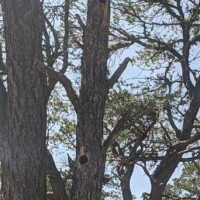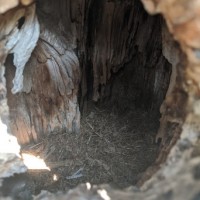FEATURED PROJECTS

WE WORK WITH YOU TO ENSURE YOUR PROJECT IS DONE RIGHT,
ON-TIME, AND ACCURATE.
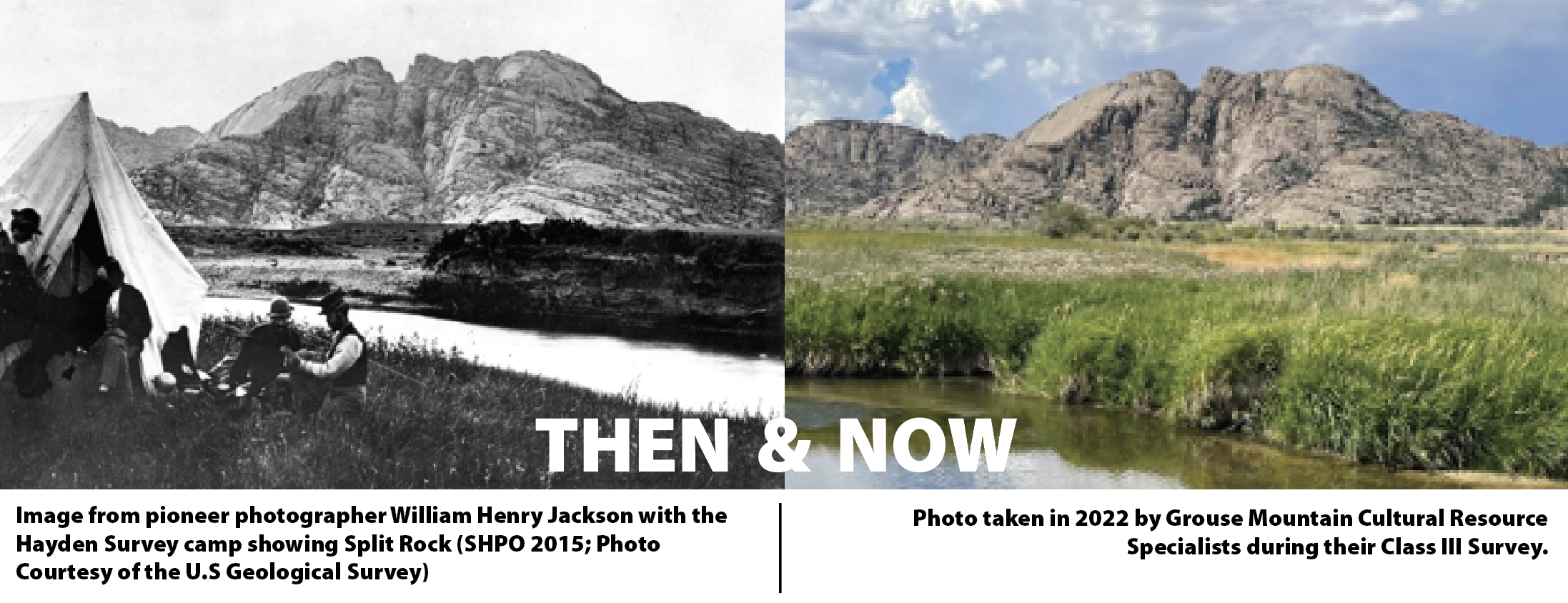
Then & Now
When we’re not in the oil fields or on abandoned mine lands, sometimes our projects bring us to places like a riverbank on the Split Rock Ranch! The Grouse Mountain Cultural Resources Department was asked to conduct a Class III Survey as part of a larger project under the jurisdiction of the United States Army Corps of Engineers (USACE) to restore and enhance aquatic resources associated with the Sweetwater River in Natrona County, Wyoming.
Prior to restoration efforts, the banks of the river were systematically surveyed for cultural material. Mid-survey, our cultural resource specialists decided to stop for a moment to take in the incredible view and snap a few photos. While back at the office and conducting background research for the report, they stumbled upon a neat discovery. In 1870, pioneer photographer William Henry Jackson took a photo of the Hayden Survey Camp (learn more here) at nearly the exact same location our cultural resource specialists stopped for their photos! Despite changes due to livestock grazing and human development, the landscape has remained remarkably consistent over the past 150+ years.
Have questions on how we can help you with your next project? Reach out to us at rmashak@gmecwy.com!
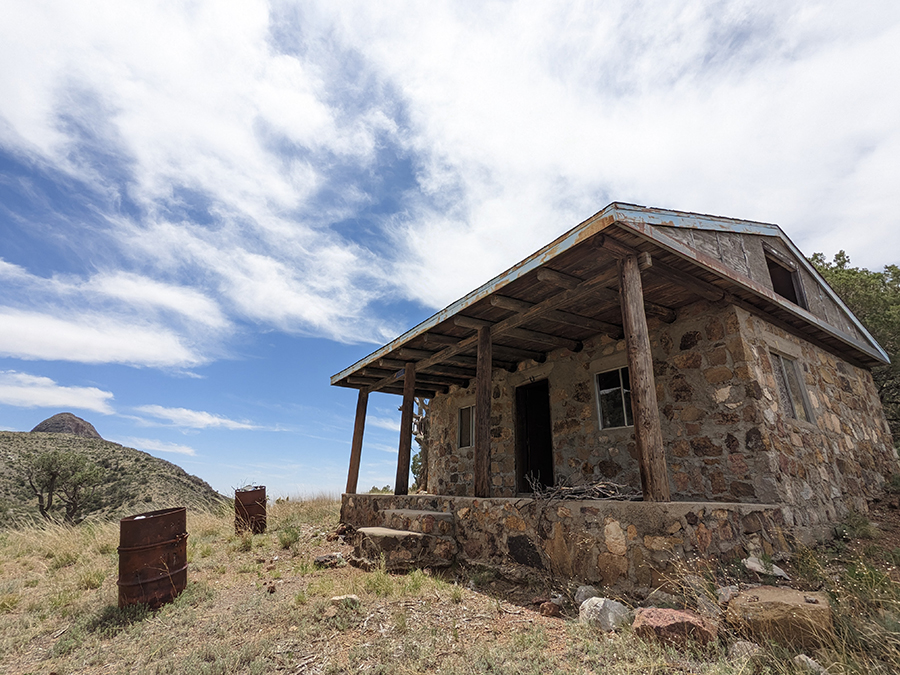
Expert Cultural Resource Management: Class I, II, & III Surveys for Your Project
Every development project, from new construction to energy infrastructure, carries a responsibility to respect and protect our shared past. Navigating environmental regulations, especially those involving cultural resources, can be complex, often requiring specialized expertise to ensure compliance and avoid costly delays. That’s where Grouse Mountain Environmental Consultants comes in. We offer comprehensive Cultural Resource Management (CRM) services, including essential Class I, II, and III Surveys, to help your project proceed smoothly and responsibly.
What is Cultural Resource Management?
Cultural Resource Management (CRM) is the professional practice of managing cultural heritage as part of development projects. It involves identifying, evaluating, and mitigating impacts to archaeological sites, historic properties, traditional cultural places, and other significant cultural assets. The goal is to balance modern development with the preservation of invaluable historical and archaeological records, ensuring compliance with federal and state regulations like National Historic Preservation Act (NHPA).
The Importance of CRM for Your Project’s Success
Ignoring potential cultural resources can lead to significant project delays, unexpected costs, legal complications, and damage to your reputation. Engaging an experienced cultural resource management firm early in your project planning saves time and money by:
- Ensuring Regulatory Compliance: Meeting federal (e.g., Section 106, NEPA) and state requirements.
- Preventing Costly Delays: Identifying and addressing potential issues proactively, before construction begins.
- Protecting Valuable Heritage: Responsibly managing and preserving archaeological and historical sites.
- Enhancing Project Efficiency: Providing clear pathways and solutions for cultural resource considerations.
Our Expert CRM Services: Class I, II, and III Archaeological Surveys
At Grouse Mountain Environmental Consultants, our team of qualified archaeologists and historians provides the full spectrum of archaeological survey services, tailored to your project’s scope and regulatory needs.
Class I: The Foundational Literature Review & Archival Search
A Class I cultural resource survey is typically the first step in the CRM process. It’s a comprehensive desk-based review and archival search of existing documentation. Our experts meticulously examine:
- Previously recorded archaeological sites and historic properties.
- Relevant historical maps, aerial photographs, and land records.
- Environmental data that might indicate areas of high archaeological potential.
The purpose of a Class I survey is to identify known cultural resources and assess the potential for unrecorded resources within your project area, helping to evaluate initial risks and guide subsequent survey phases.
Class II: Reconnaissance-Level Field Survey
Following a Class I, a Class II cultural resource survey involves a reconnaissance-level field survey of the project area. This typically includes:
- Limited field investigation and sampling.
- Walking transects across selected portions of the property.
- Shovel testing in areas of high potential to confirm or deny the presence of resources.
A Class II archaeological survey is ideal for large linear projects or broad areas where a general understanding of cultural resource presence is needed without exhaustive coverage. It helps to refine the scope for more intensive investigations if required.
Class III: Intensive Survey & Detailed Site Inventory
The Class III cultural resource survey is the most thorough and intensive level of investigation. This involves:
- 100% pedestrian coverage of the project area, with archaeologists walking closely spaced transects.
- Systematic shovel testing (excavating small holes) at pre-determined intervals to identify buried cultural materials.
- Detailed identification and recording of all visible cultural resources, from prehistoric campsites to historic structures.
The outcome of a Class III survey is a comprehensive site inventory, including detailed documentation, photographs, mapping, and a thorough assessment of each identified cultural resource’s significance. This intensive level of survey is typically required for projects with high ground disturbance or within areas known for significant cultural sensitivity.
Why Choose Grouse Mountain Environmental Consultants?
Choosing the right cultural resource management partner is crucial for your project’s success. At Grouse Mountain Environmental Consultants, we bring:
- Decades of Experience: Our team possesses extensive knowledge of archaeological methods and regulatory compliance across diverse landscapes.
- Regulatory Acumen: A deep understanding of federal, state, and tribal cultural resource laws and permitting processes.
- Efficiency & Accuracy: We deliver high-quality reports and fieldwork, ensuring your project meets deadlines and compliance standards.
- Collaborative Approach: We work closely with our clients, agencies, and stakeholders to find practical, compliant solutions.
Don’t let cultural resource management become a roadblock for your next development. Partner with Grouse Mountain Environmental Consultants to navigate the complexities, protect our shared heritage, and keep your project on track.
Ready to ensure your project’s cultural resource compliance? Contact Grouse Mountain Environmental Consultants today for a consultation.
Learn more about our Class I, II, and III archaeological survey and site inventory services.
Pocket Gopher Trapping Surveys
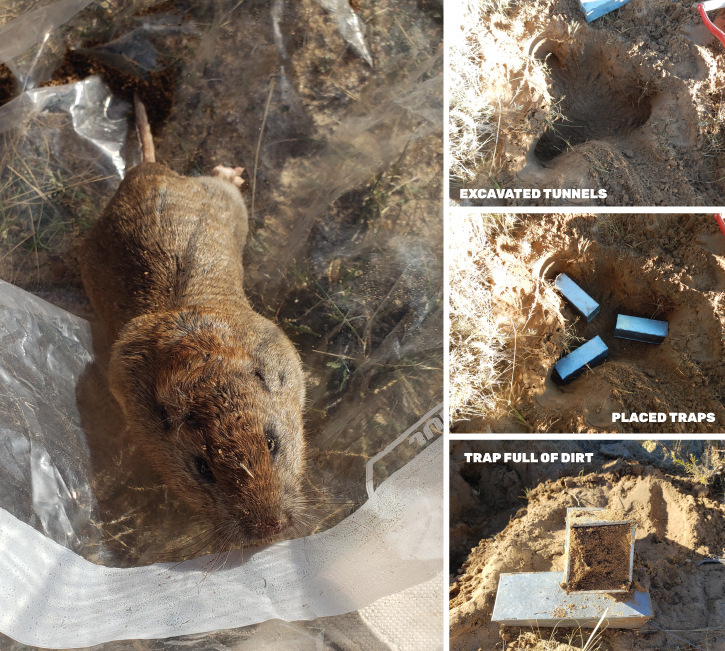
The northern pocket gopher is native to Wyoming and its range overlaps that of the sensitive Wyoming pocket gopher. Wyoming pocket gophers are the smallest of the genus Thomomys. Their limited range in south-central Wyoming and general rarity across the landscape has caused them to be listed as Sensitive in the state, requiring further management to protect the species. In the fall of 2022, Grouse Mountain conducted surveys to determine what species of pocket gopher inhabited a gopher complex identified by a BLM Rawlins Field Office biologist on a proposed oil and gas well location. Grouse Mountain biologists set live traps where fresh gopher mounds were identified and all gophers captured were the more prevalent and non-sensitive northern pocket gopher. At the request of the Wyoming Game and Fish Department, our biologists also conducted vegetation surveys at trap sites to examine the hypothesized relationship between pocket gopher species and certain shrub communities.
On-Call Environmental Compliance
New Mexico Department of Energy, Minerals, and Natural Resources – Abandoned Mine Land (AML) Program
Statewide • January 1, 2017-Present
Grouse Mountain is currently contracted by New Mexico Energy, Minerals, and Natural Resources Department (EMNRD), Mining and Minerals Division, Abandoned Mine Land (AML) Program providing environmental compliance services throughout the state of New Mexico. To date, Grouse Mountain has successfully guided the AML through multiple complex environmental and NEPA compliance tasks and is working with the AML to complete most complex restoration project to-date. Our technical professionals have prepared National Environmental Policy Act documentation (including Biological Assessment/Biological Evaluation (BA/BE), Categorical Exclusions, and Environmental Assessments), conducted natural resource inventories, held public information meetings and performed extensive surface water quality baseline sampling.
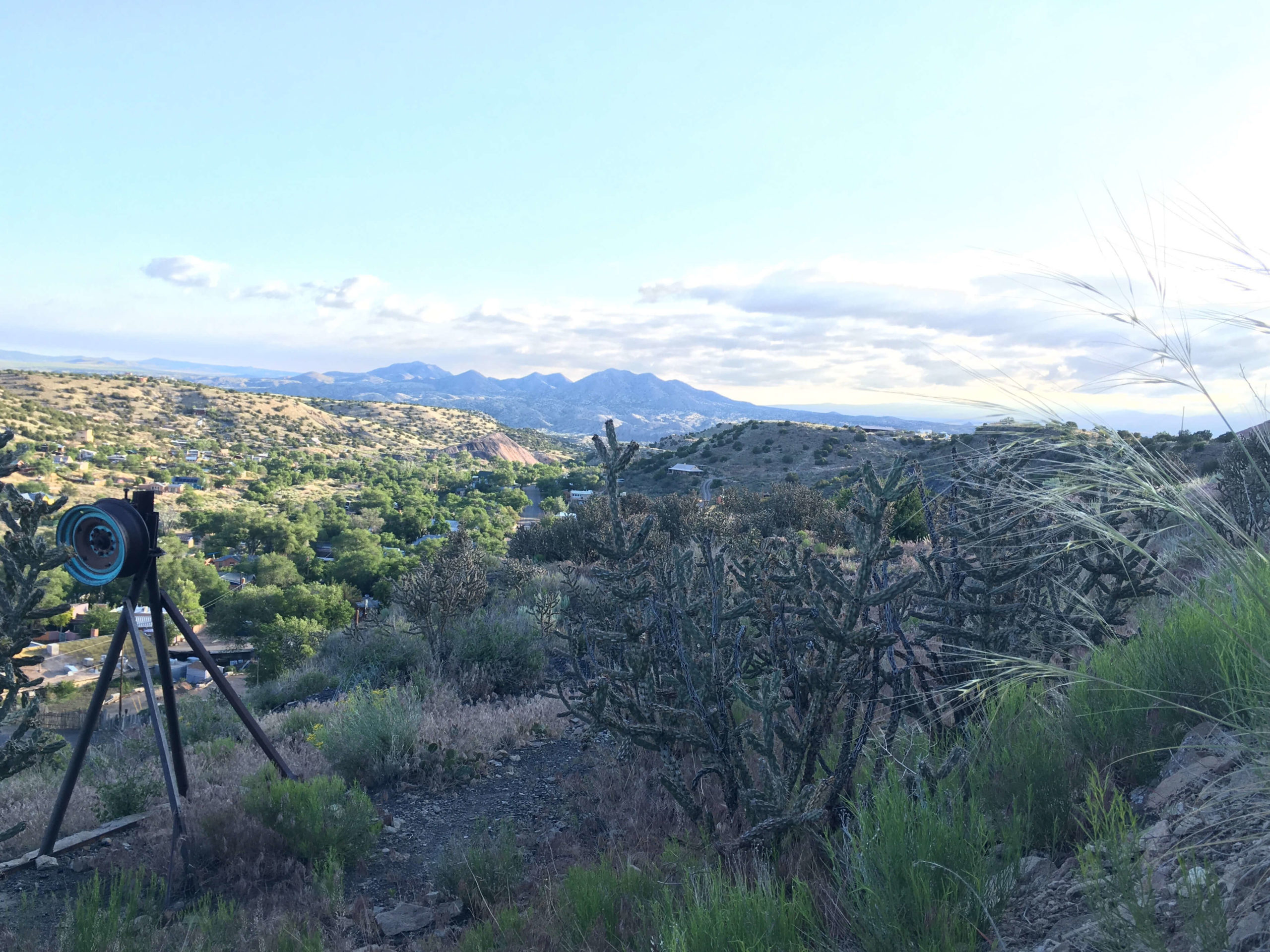
Grouse Mountain planned and implemented a water quality monitoring program to ensure compliance with New Mexico Water Quality Standards and the New Mexico Water Quality Act for stormwater conveyances associated with coal waste piles in Madrid, New Mexico. A total of five (5) monitoring sites were selected for water quality testing and analysis within the Area of Potential Effect (APE). Monitoring sites were selected based on accessibility and the ability to meet the objectives of monitoring plan. The monitoring sites consisted of one (1) reference site, two (2) coal waste drainage sites, and two (2) discharge point sites. Each monitoring site was equipped with a Global Water WS705 composite automatic sampler. At each site the automatic samplers were set up in flow trigger mode meaning the samplers initiate intaking water samples when the sensor detects flow. All the designated sites were monitored until water samples are collected for at least five (5) separate rainfall events. Grouse Mountain personnel completed an analytical report for the collected water samples and made recommendations for any chemical constituents that exceed permissible levels.

Abandoned Mine Site Environmental Resource Evaluations
Wyoming Department of Environmental Quality Abandoned Mine Land Division
Statewide • January 2017 - Present
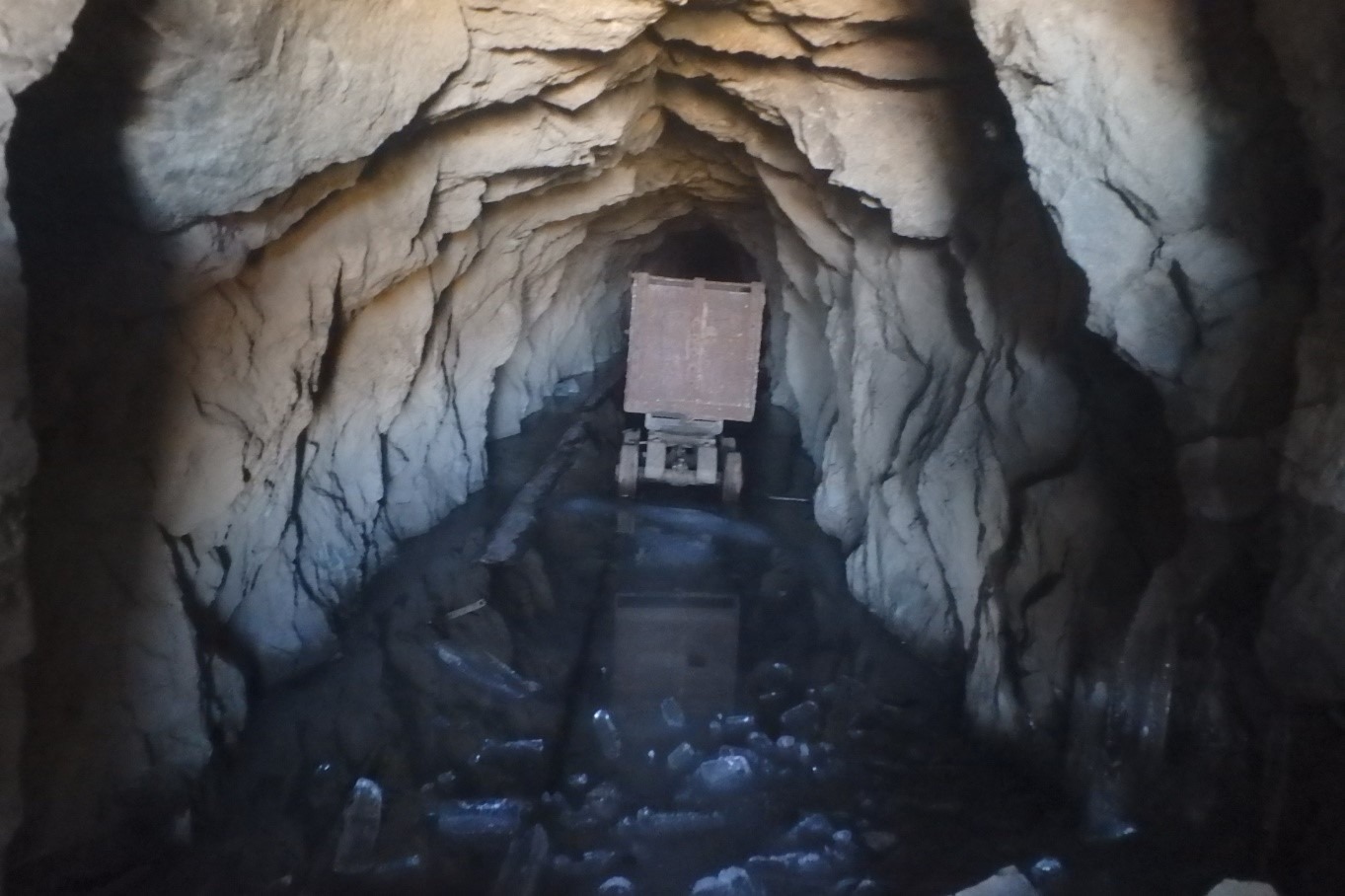
Grouse Mountain is contracted by the Wyoming Department of Environmental Quality Abandoned Mine Land Division to perform environmental resource evaluations prior to the reclamation of abandoned mine sites across the state. Our biologists and vegetation specialists travel to the mine sites and perform an inventory of flora and fauna as well as identify any potential direct or indirect impacts the proposed action may have on threatened, endangered, candidate and sensitive species. Potential impacts to bats, migratory birds, big game, wetlands and Waters of the United States are also analyzed.
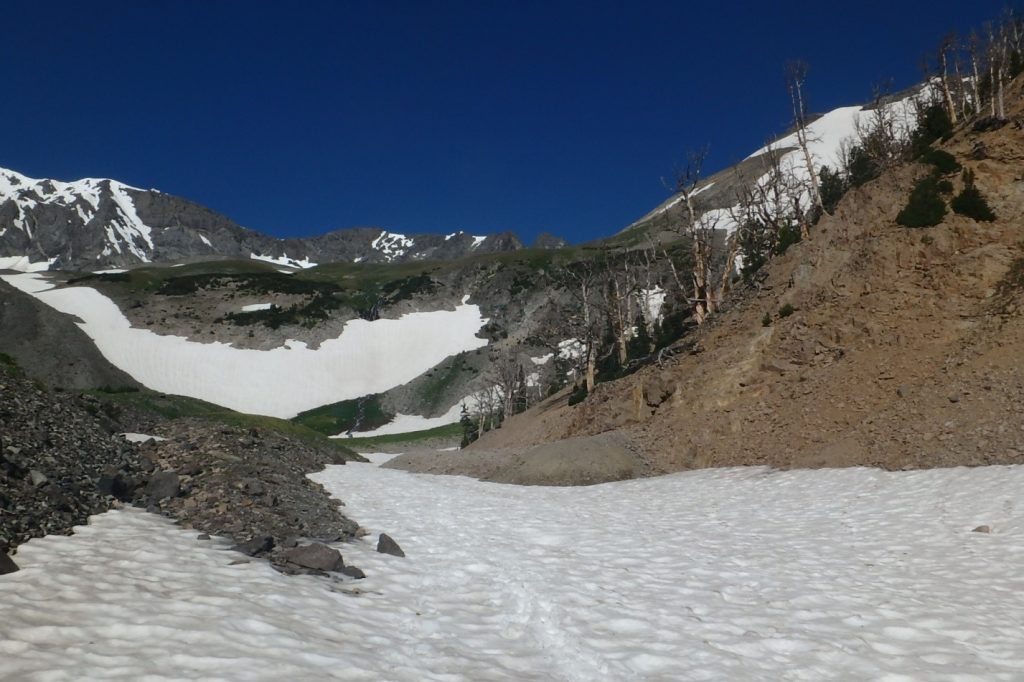
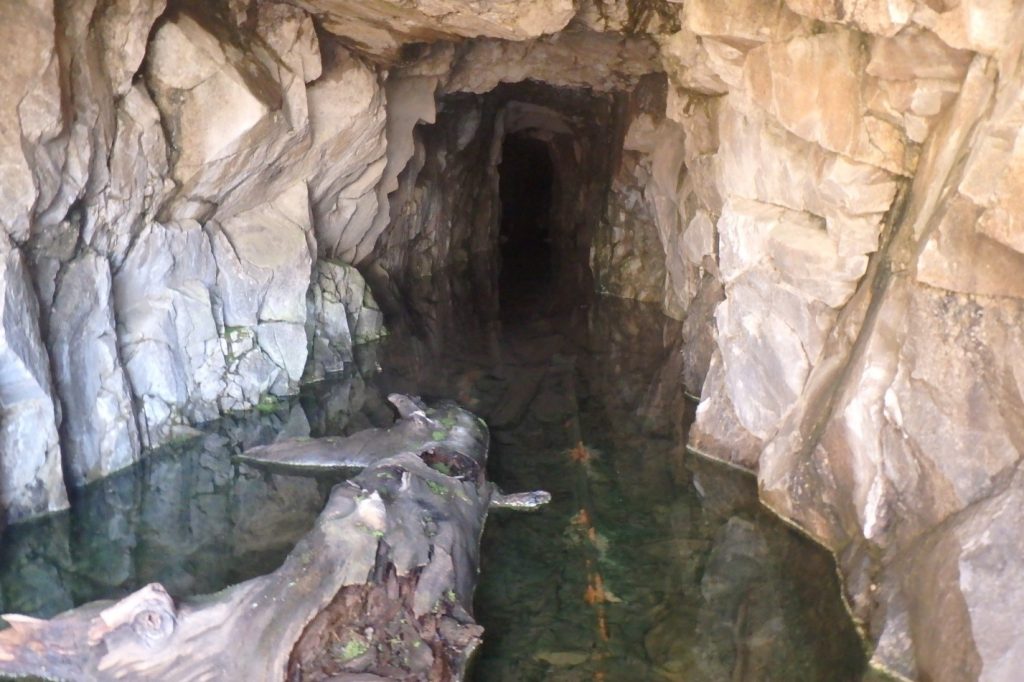
Watershed Rangeland Health Assessments
Bureau of Land Management Buffalo Field Office
Johnson and Sheridan Counties • May 2016 – Present
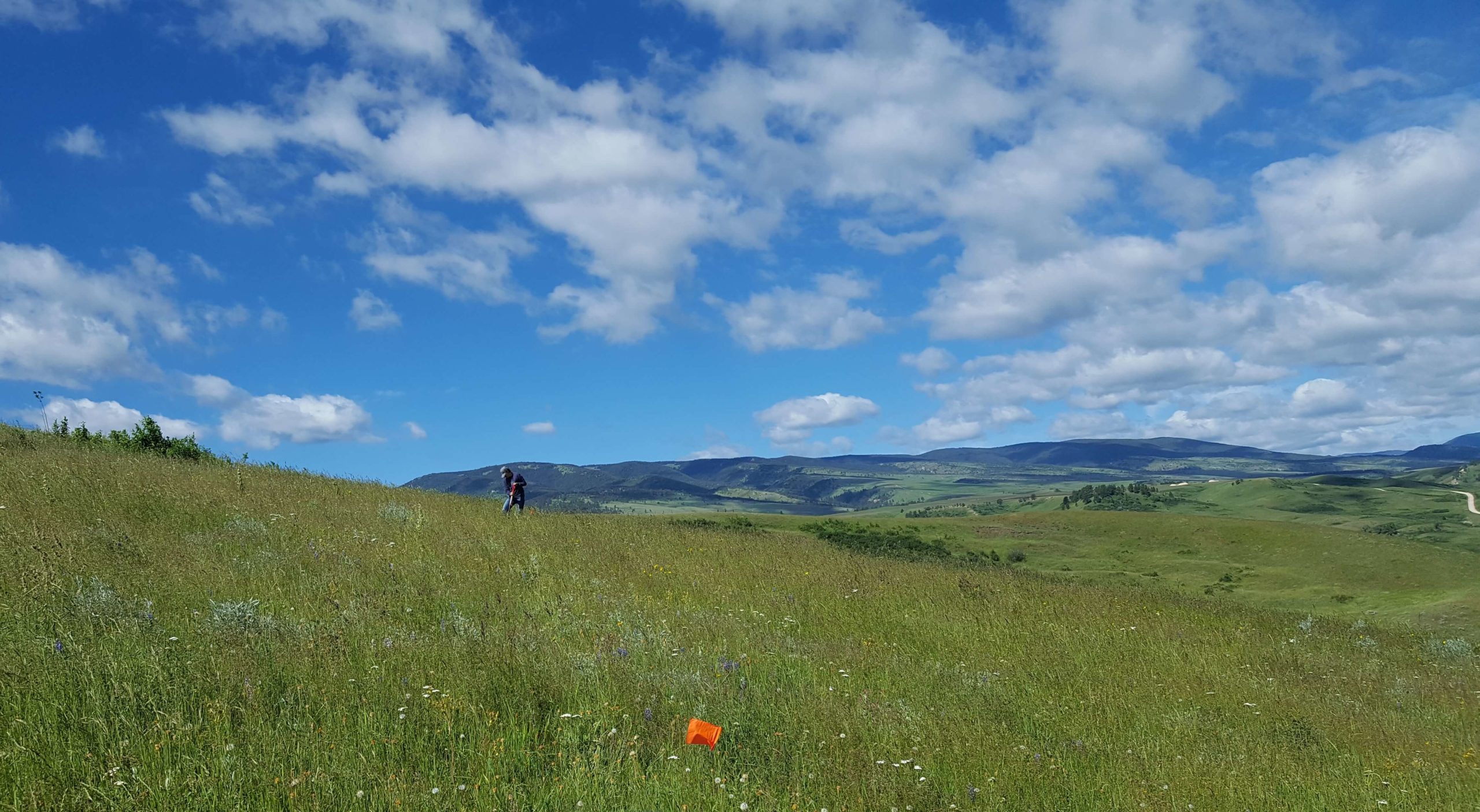
Grouse Mountain’s highly trained team worked closely with the BLM-Buffalo Field Office to coordinate and conduct 228 terrestrial Assessment Inventory and Monitoring (AIM) points and assess 11.75 miles of intermittent and perennial stream segments for Proper Functioning Condition (PFC). Grouse Mountain communicated with private landowners and BLM personnel in order to secure access and identify approved routes to the points. GMEC then created maps and import files to navigate to the points using the approved routes. At each point, our Interdisciplinary Team of three specialists collected a host of site information including: Plot characteristics, photo points, a description of soil profiles and soil characteristics, current land use, presence of erosional features, vegetative cover and composition using line point intercept, vegetation height and sagebrush shape, forage production, and soil stability. The IDT Team then used the collected information to identify the ecological site and state and interpret indicators of rangeland health using seventeen (17) Indicators for Rangeland Health.
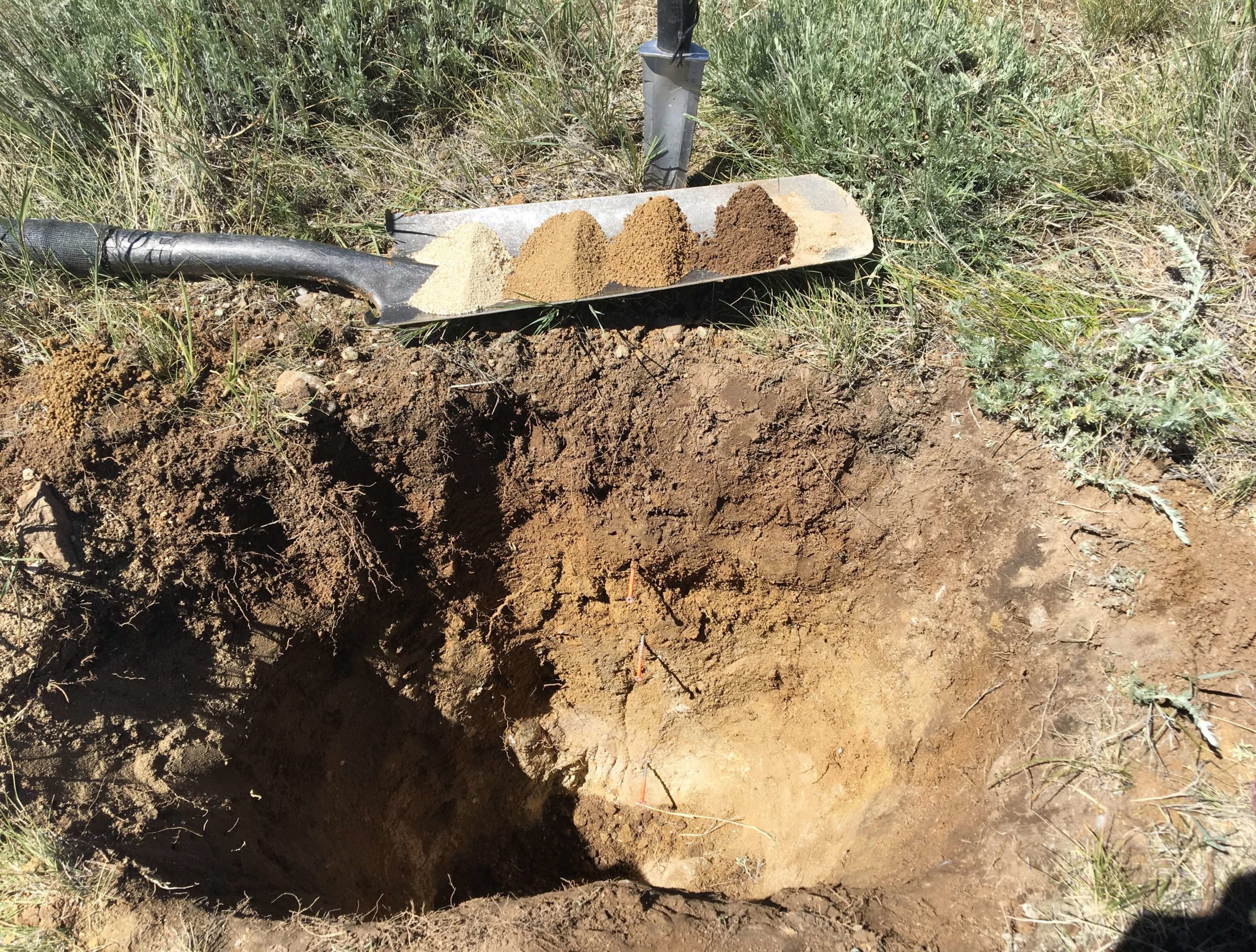
Wildlife Studies for Wind Energy Development
Electrical Consultants, Inc.
Eastern Montana • 2017 - 2019
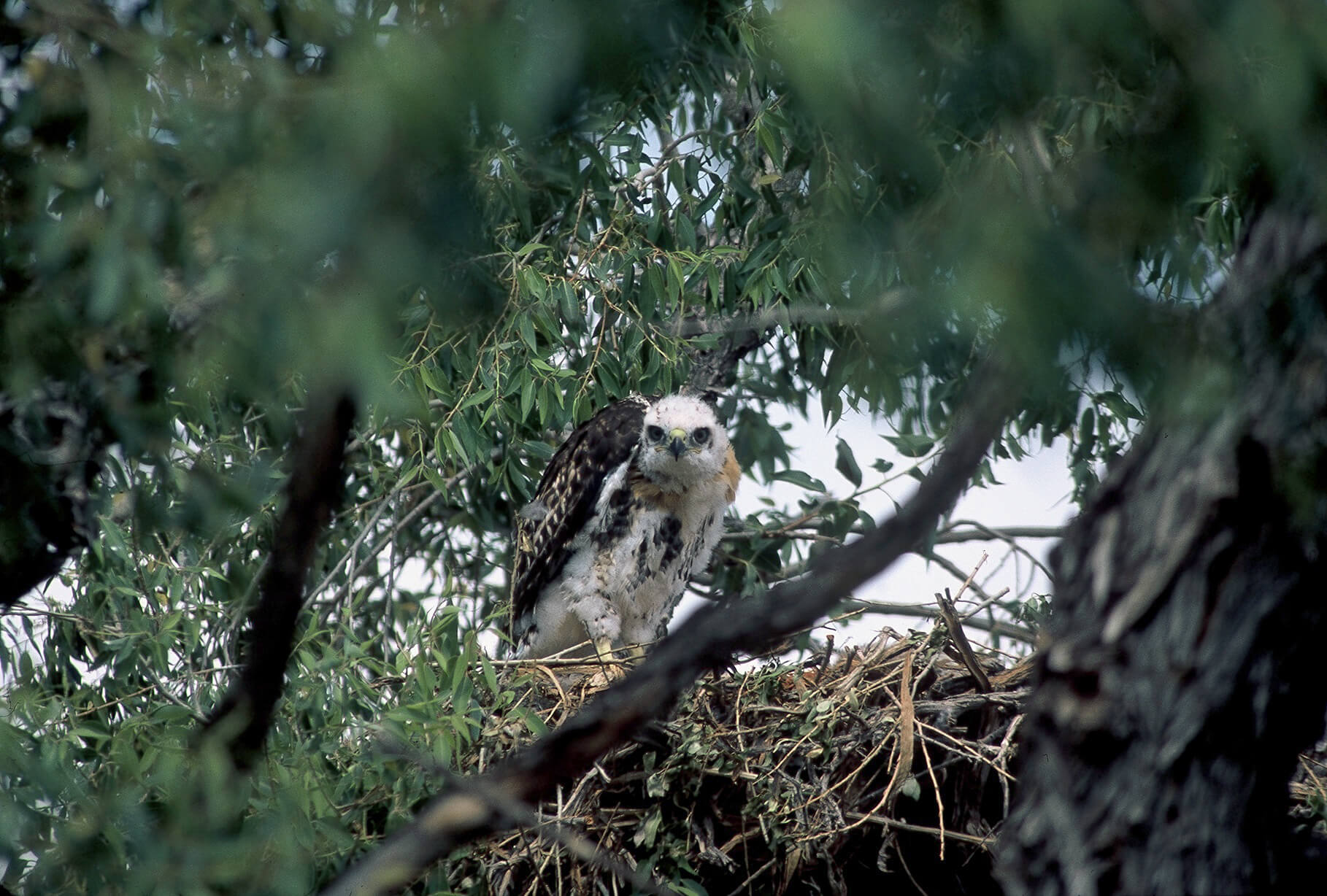
Grouse Mountain was contracted to complete pre-development wildlife studies in compliance with the USFWS Land-Based Wind Energy Guidelines (WEG), Eagle Conservation Plan Guidance, and the Upper Great Plains Wind Energy Programmatic Environmental Impact Statement (DOE/EIS-0408) for a proposed wind energy project in eastern Montana. Eagle and large bird point count surveys, passerine point count surveys, and migration point count station surveys were conducted monthly by our team of experienced wildlife biologists from October 2017 through September 2019. Additional tasks included conducting two years of eagle/raptor nest monitoring and occupancy surveys, sharp-tailed grouse lek surveys, acoustic monitoring surveys for bat species, and the completion of monthly and annual reports.
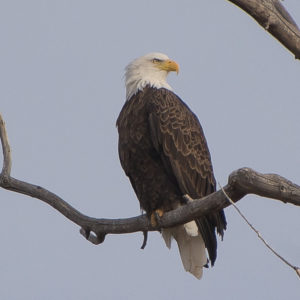
Artificial Raptor Perch Fabrication and Installation- Military Department Lands
Wyoming Military Department
Sheridan, Wyoming • 2017

Grouse Mountain worked with the Wyoming Military Department (WYMD) to construct and install five (5) artificial raptor perches on Military Department lands in Sheridan, WY. Our team of wildlife biologists coordinated with WYMD to determine perch placement. Perches were placed within prairie dog colonies to create vantage points for hunting raptors.
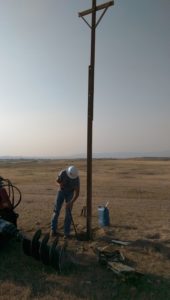

Reclamation
Grouse Mountain is able to offer a wide variety of reclamation services across the Rocky Mountain Region. If you’re looking for successful revegetation on any surface, Grouse Mountain is here to assist you.

Assessment, Inventory, and Monitoring (AIM) Strategy
The Bureau of Land Management’s Assessment, Inventory, and Monitoring (AIM) Strategy provides a framework to inventory and quantitatively assess the condition and trend of natural resources on public lands. Our Grouse Mountain teams perform terrestrial core AIM methods to collect vegetation and soil condition data that is provided to the BLM to guide management decisions. For 5 years, we have partnered with BLM field offices throughout Wyoming to implement this strategy and to date have completed 724 AIM points.

Water Sampling
Our hydrologists have extensive experience, from large-scale watershed modeling to small-scale stream assessments. We can help with all facets of your project whether you are assessing the condition of aquatic systems, implementing a mitigation strategy, or conducting water quality monitoring. Here is Suman Chitrakar, our in house Hydrologist, sampling a water well for one of our landowners.

Nesting Surveys in New Mexico’s Cibola National Forest
Grouse Mountain biologists completed pre-construction nesting surveys this summer for a forest thinning project in New Mexico’s Cibola National Forest. Forest thinning is a common land management tool utilized in national forests to reduce the risk of wildfire and create greater biodiversity within tree stands. For this project, only large diameter trees (defined by a specific size) will remain after thinning is completed. These ponderosa pine, juniper, and pinyon pine trees will grow larger and healthier in a thinned stand compared to growing in a dense stand.
During these surveys our biologists looked for active bird nests within the project area. Pre-construction nesting surveys ensure no birds are actively nesting within the project area and could be harmed while work is conducted. If a nest were found, an appropriate distance buffer would be placed around the nest and work within the buffer would not resume till the nest is inactive. These mitigations also ensure an operator is within compliance for the Migratory Bird Treaty Act.
While no active nests were found, our biologists did find numerous inactive cavity nests throughout the project area. Cavities are created by a primary cavity excavator (i.e. woodpeckers) and are important to forest ecosystems as they provide nesting habitat for secondary cavity nesters including smaller birds, bats, small mammals, and falcon and owl species.
For more information about Grouse Mountain Environmental Consultants, or questions on your next New Mexico forestry project, visit https://grousemtnconsultants.com/ or call 505-930-5166.
Class III Cultural Resource Investigation
Grouse Mountain was contracted by the Colorado Department of Natural Resources on behalf of the Colorado Parks and Wildlife to conduct a Class III cultural resource investigation and site re-evaluations for a road closure and maintenance project in the Dominguez-Escalante National Conservation Area within the greater Colorado Plateau. The project area spanned multiple Townships and Sections in southern Mesa County, Colorado, on lands administered by the Bureau of Land Management (BLM). The project involved pedestrian survey of several recreational roads and UTV trail segments totaling 28 miles, or 350 linear acres, over a 10-day field effort.
During the Class III investigation, Grouse Mountain archaeologists re-located and evaluated 35 known prehistoric and historic archaeological sites, as well as identified an additional 53 undocumented cultural resources. Site types ranged from historic corrals, homesteads, and roads to complex prehistoric campsites, rock art, small chipped stone concentrations, and isolated artifacts. Our team was able to identify specific Native American occupations through artifact analysis and a comprehensive background research of the region. This investigation resulted in numerous National Register of Historic Places evaluations and management recommendations for the BLM Grand Junction Field Office.
These images were taken of a newly discovered rock art site containing charcoal drawings on sandstone. The image on the left is what is visible to the naked eye, while the image on the right used iDStretch, a portable enhancement application. Once applied, additional figures can be seen where the enhancement tool highlights and strengthens the visible drawings.

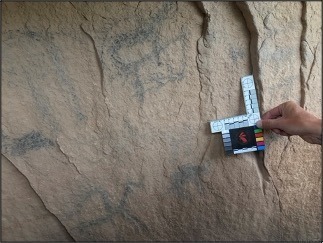
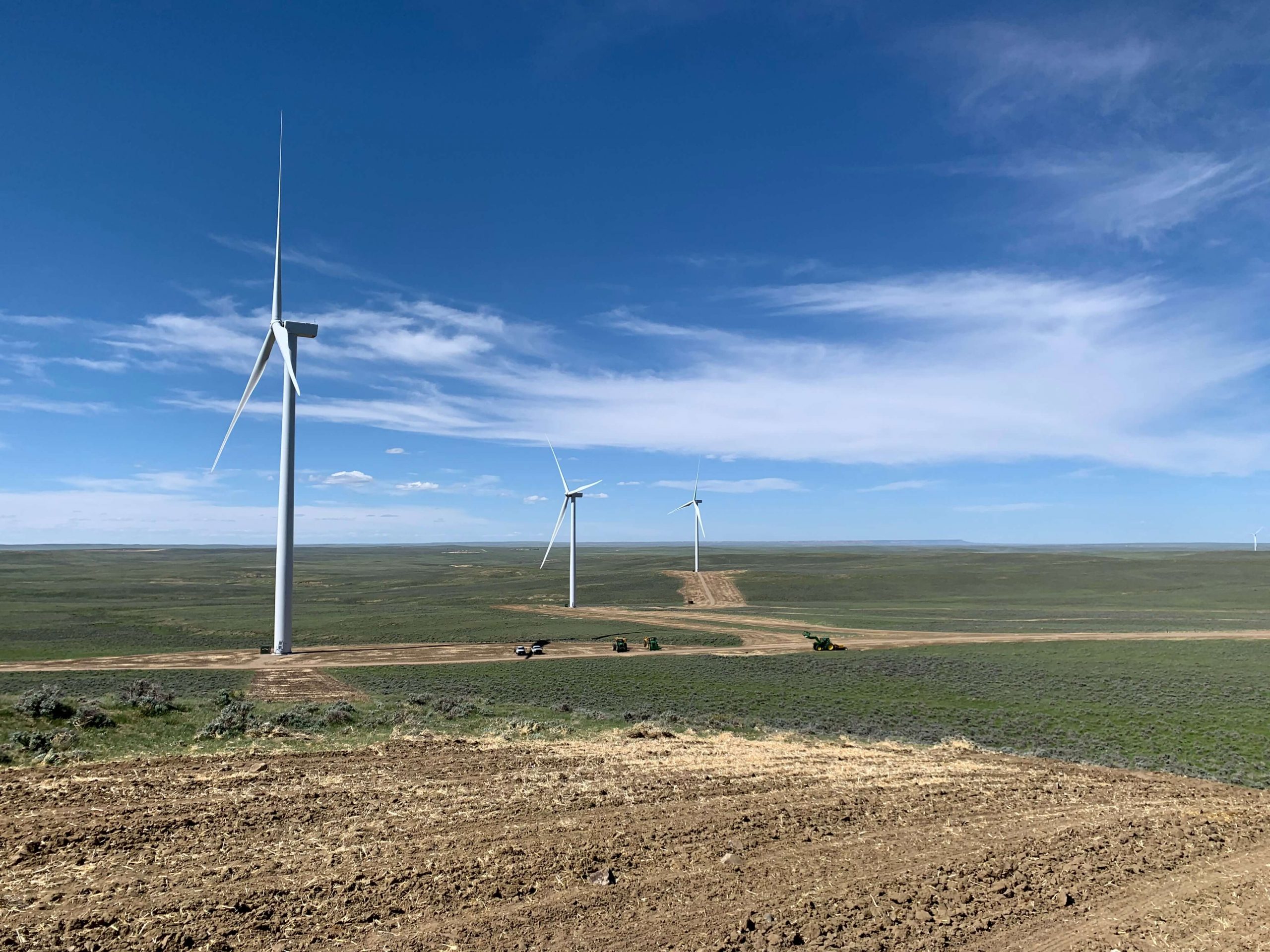
Windfarm Reclamation Project
Grouse Mountain spent this last reclamation season completing reclamation on 1,728 acres for 119 wind turbine locations and associated facilities. Every acre of this project was disked to reduce post-construction compaction.

We then spread straw mulch at a rate of two tons per acre and disked the straw mulch into the soil. Spreading straw on recently disturbed areas helps to minimize erosion and provides nutrients for new seedlings. Disking straw into the soil is comparable to crimping and helps keep the straw in place until revegetation occurs.
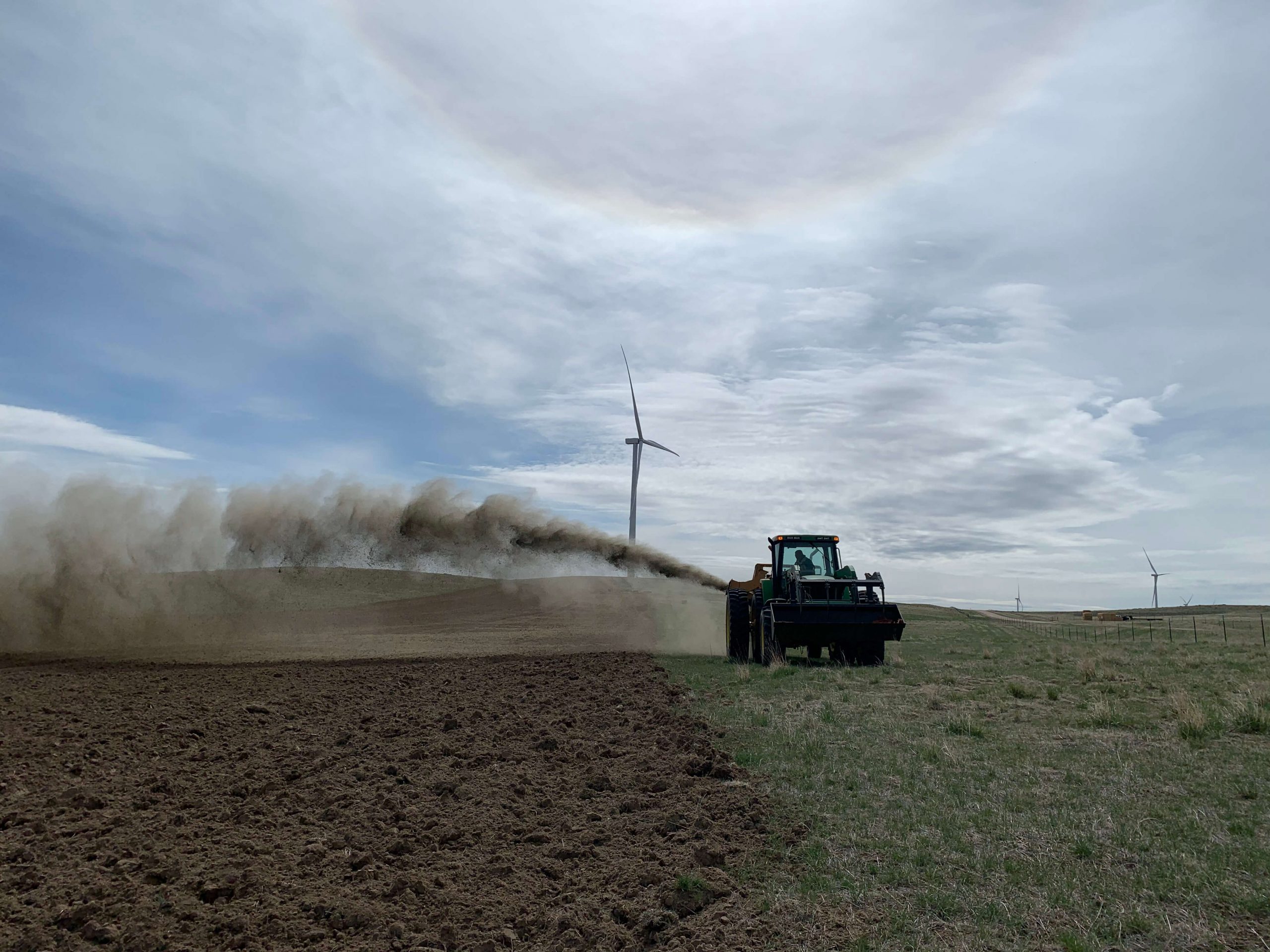
Disking straw mulch is not essential, but some clients and landowners prefer this method to incorporate organic matter into the soil. Finally, we drill seeded all disturbed areas using custom seed mixes for each landowner. Seed mixes are generally selected based on historical vegetation, soil types, and land use purposes.
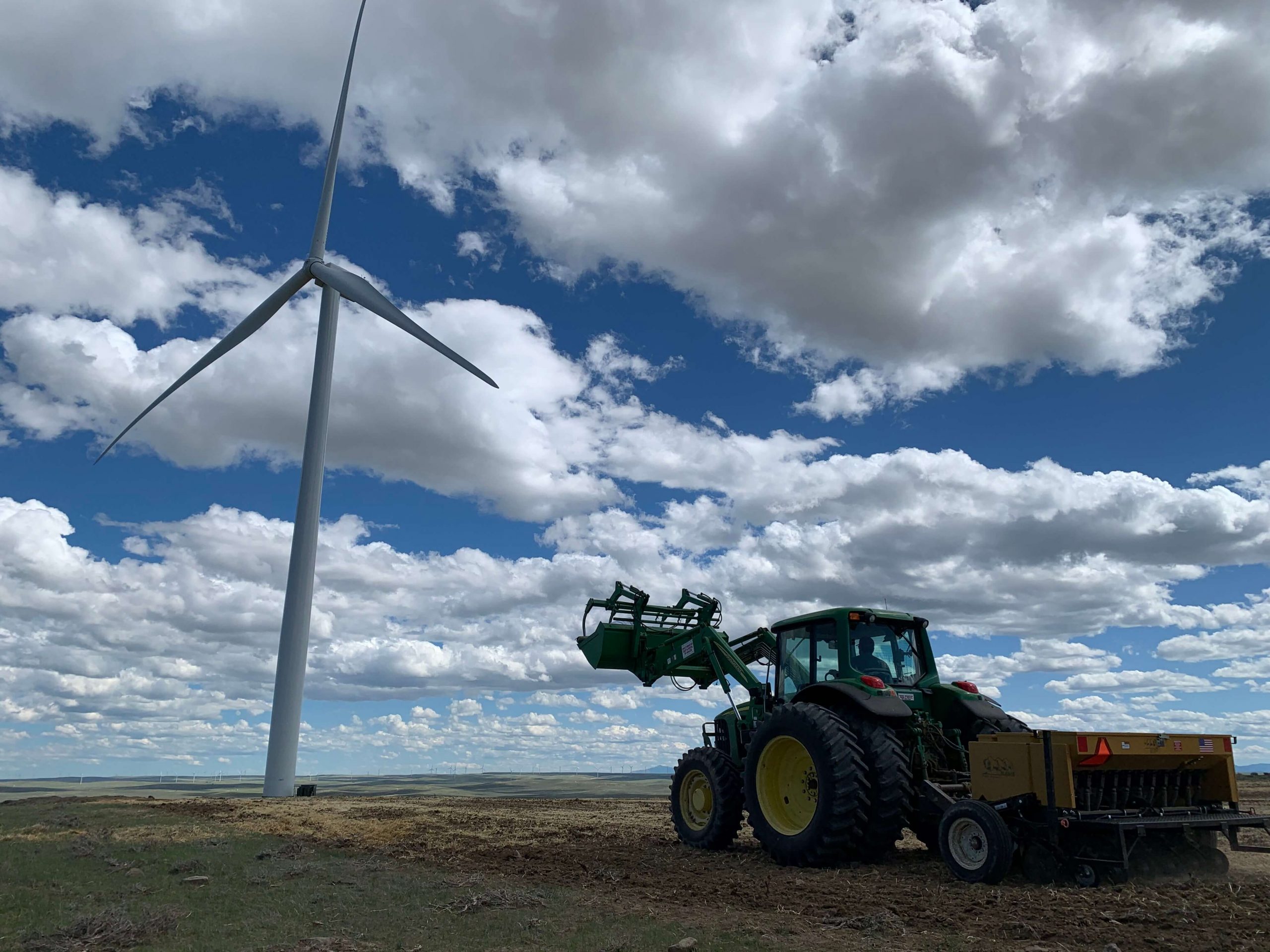
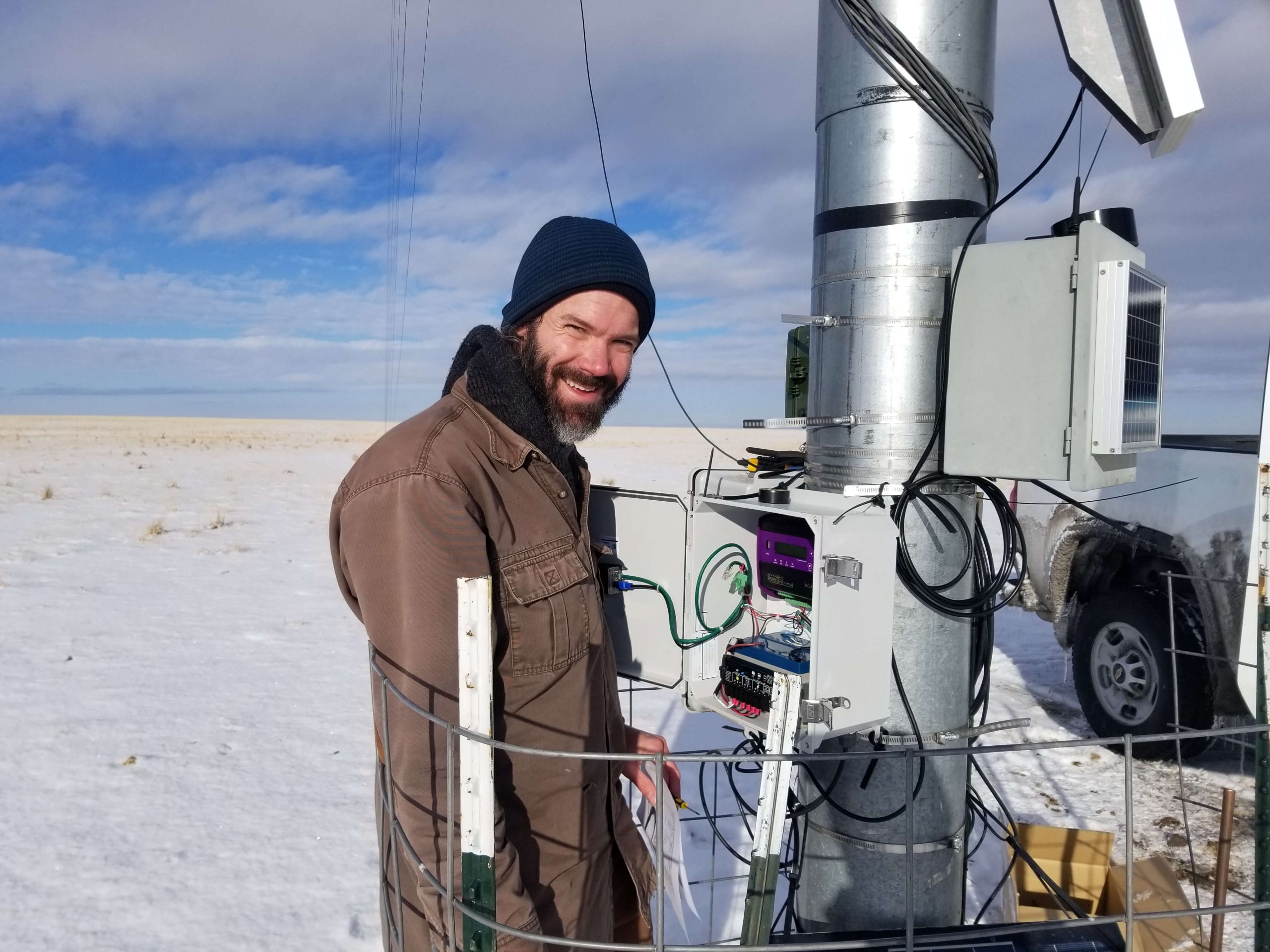
Data Logger Project with Kevin and Katie
Grouse Mountain team members recently deployed a new data logger alongside a bat recorder on a project site in eastern Montana. The recorder captures ultrasonic bat calls enabling us to determine species presence and seasonal changes in species occurrence. Collecting this information is recommended for two years prior to development of wind energy per the U.S. Fish and Wildlife Service’s Land-Base Wind Energy Guidelines. The data logger queries the bat recorder nightly and provides status back to our wildlife biologists giving us a pulse on operations of the system. Learn more about the wildlife services we provide to wind energy developers. https://grousemtnconsultants.com/services/wildlife-resources/
Wildlife Season
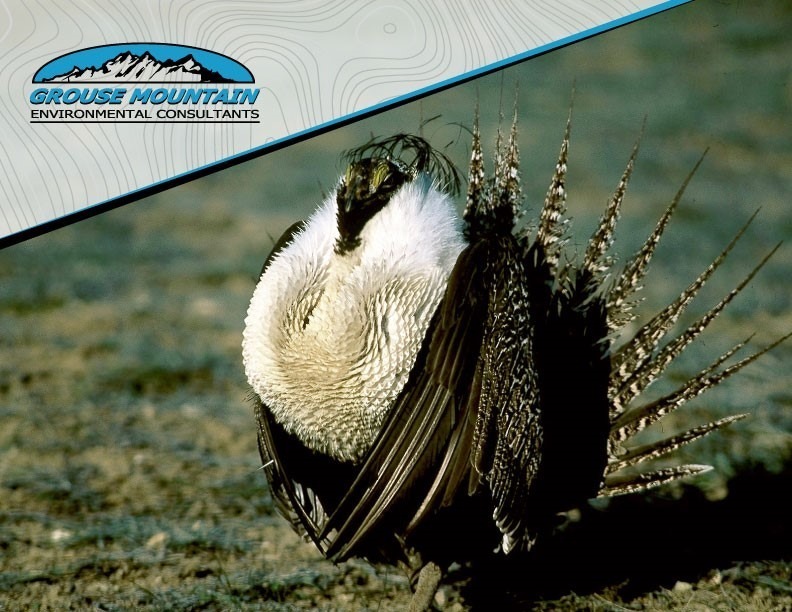
When Jason Sutton and Jenna Foss first started Grouse Mountain Environmental Consultants in 2007, their initial goal was to provide federal oil and gas permitting, as well as environmental consulting services to the Powder River Basin. As the principal owners of the company, Jason and Jenna’s mission was, and still is, to deliver the highest-level professionalism and experience to their clients by providing creative solutions and offering timely, responsive services.
Those services have grown to include many aspects, including helping clients obtain federal Applications for Permits to Drill (APDs), proposed development for renewable energy, navigating policies surrounding greater sage grouse management and more. Some of the most important services Grouse Mountain offers, however, involve the upcoming wildlife season.
“One of the biggest services we offer at Grouse Mountain is our wildlife surveying,” Sutton said. “Whether our clients are planning to build a well location, or upgrade a road or perform any type of new disturbance- a lot of these projects, especially if they have a federal component, have a wildlife survey requirement before they start the actual work.”
Wildlife surveys include a broad spectrum of considerations, often focused on threatened, endangered and sensitive species, avian point count and mortality, eagle, raptor and migratory bird nesting, Bald Eagle winter roosting, bat acoustic monitoring, sage-grouse, sharp-tailed grouse and lesser prairie-chicken lek inventory, small mammals, big game and more. Grouse Mountain Environmental Consultants provide all of these services in an efficient, all-encompassing way designed to offer support and guidance to their clients throughout the wildlife season.
“Depending on where our clients are located, our surveyors have to conduct these surveys within a certain time window,” Sutton stated. “Specifically with our Buffalo office [for example], our wildlife biologists will make three visits over the course of the spring to make sure that they get an accurate representation of what’s out there. So, they will go visit the site, then they will wait 10 days and visit the site again. Then, they will wait another 10 days and visit the site a third time and compile their results. Then, they’ll submit that information back to the agency and the agency will use that information to determine whether they are going to restrict activities or not.”
Grouse Mountain also partners with clients to navigate environmental regulatory processes, from pre-planning through post-development project phases. They design and implement wildlife studies and mitigation strategies that are compliant with federal and state regulations for threatened and endangered species, species of concern, and special status plant and animal species.
“We have very experienced wildlife biologists,” Foss revealed. “Many of them have been doing this kind of work for more than 10 years. [At Grouse Mountain], we’re very familiar with the area, with the species involved and with the protocols and processes that our clients need to get their job done. We’re expanding into more areas as well, and our biologists have built a great reputation of performing good, quality surveys.”
And really, that’s the biggest reason Jason and Jenna started Grouse Mountain Environmental Consultants thirteen years ago. They wanted to provide the people of Wyoming and beyond a full-service resource for planning, permitting and implementation. While their services have evolved, their mission has not, and they continue to prove themselves to be a reliable resource for a wide variety of clientele.
“Jenna and I both have natural resource backgrounds,” Sutton stated. “When we came to the area, we noticed that there was a big need for a company that could provide clients with the environmental services that they needed to secure their permit. We were able to bridge that gap for them because we had the ability to speak with landowners and operators to explain what needed to be done. We’re able to relay the information back and forth and communicate well with all parties involved. This job is a challenging and exciting thing to do, and I feel like we make a difference when we do it. We may have, more or less, “fallen into” this job, but that’s why we continue to do it.”
Grouse Mountain Environmental Consultants will continue to provide services to clients throughout the Rocky Mountain, Southwest, and Midwest regions. For more information, visit grousemtnconsultants.com or call 307-684-2112.
Wildlife Season

When Jason Sutton and Jenna Foss first started Grouse Mountain Environmental Consultants in 2007, their initial goal was to provide federal oil and gas permitting, as well as environmental consulting services to the Powder River Basin. As the principal owners of the company, Jason and Jenna’s mission was, and still is, to deliver the highest-level professionalism and experience to their clients by providing creative solutions and offering timely, responsive services.
Those services have grown to include many aspects, including helping clients obtain federal Applications for Permits to Drill (APDs), proposed development for renewable energy, navigating policies surrounding greater sage grouse management and more. Some of the most important services Grouse Mountain offers, however, involve the upcoming wildlife season.
“One of the biggest services we offer at Grouse Mountain is our wildlife surveying,” Sutton said. “Whether our clients are planning to build a well location, or upgrade a road or perform any type of new disturbance- a lot of these projects, especially if they have a federal component, have a wildlife survey requirement before they start the actual work.”
Wildlife surveys include a broad spectrum of considerations, often focused on threatened, endangered and sensitive species, avian point count and mortality, eagle, raptor and migratory bird nesting, Bald Eagle winter roosting, bat acoustic monitoring, sage-grouse, sharp-tailed grouse and lesser prairie-chicken lek inventory, small mammals, big game and more. Grouse Mountain Environmental Consultants provide all of these services in an efficient, all-encompassing way designed to offer support and guidance to their clients throughout the wildlife season.
“Depending on where our clients are located, our surveyors have to conduct these surveys within a certain time window,” Sutton stated. “Specifically with our Buffalo office [for example], our wildlife biologists will make three visits over the course of the spring to make sure that they get an accurate representation of what’s out there. So, they will go visit the site, then they will wait 10 days and visit the site again. Then, they will wait another 10 days and visit the site a third time and compile their results. Then, they’ll submit that information back to the agency and the agency will use that information to determine whether they are going to restrict activities or not.”
Grouse Mountain also partners with clients to navigate environmental regulatory processes, from pre-planning through post-development project phases. They design and implement wildlife studies and mitigation strategies that are compliant with federal and state regulations for threatened and endangered species, species of concern, and special status plant and animal species.
“We have very experienced wildlife biologists,” Foss revealed. “Many of them have been doing this kind of work for more than 10 years. [At Grouse Mountain], we’re very familiar with the area, with the species involved and with the protocols and processes that our clients need to get their job done. We’re expanding into more areas as well, and our biologists have built a great reputation of performing good, quality surveys.”
And really, that’s the biggest reason Jason and Jenna started Grouse Mountain Environmental Consultants thirteen years ago. They wanted to provide the people of Wyoming and beyond a full-service resource for planning, permitting and implementation. While their services have evolved, their mission has not, and they continue to prove themselves to be a reliable resource for a wide variety of clientele.
“Jenna and I both have natural resource backgrounds,” Sutton stated. “When we came to the area, we noticed that there was a big need for a company that could provide clients with the environmental services that they needed to secure their permit. We were able to bridge that gap for them because we had the ability to speak with landowners and operators to explain what needed to be done. We’re able to relay the information back and forth and communicate well with all parties involved. This job is a challenging and exciting thing to do, and I feel like we make a difference when we do it. We may have, more or less, “fallen into” this job, but that’s why we continue to do it.”
Grouse Mountain Environmental Consultants will continue to provide services to clients throughout the Rocky Mountain, Southwest, and Midwest regions. For more information, visit grousemtnconsultants.com or call 307-684-2112.
Katie Taylor on Wildlife Surveys
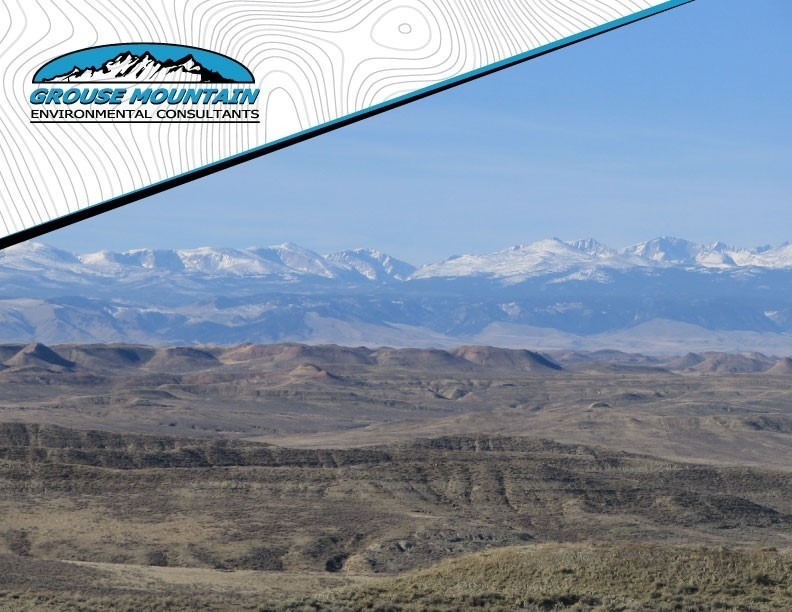
Grouse Mountain Environmental Consultants specializes in environmental permitting and compliance services throughout the Rocky Mountain region. Those services include Federal and State permitting, GIS and Database solutions, Phase I Environmental Site assessments, reclamation and remediation, water monitoring and more. Some of the most essential services that Grouse Mountain offers are Wildlife Surveys, performed by wildlife biologists with extensive experience in the field.
One of those biologists is Katie Taylor, the Lead Wildlife Biologist and Project Manager at Grouse Mountain. Taylor completed her undergraduate in Washington State, before receiving her master’s degree from the University of Wyoming. During her studies, Taylor specialized in wildlife research relating to big game, which led her to Grouse Mountain Environmental Consultants.
“We provide a wide range of wildlife services for our clients,” Taylor stated. “As Wildlife Biologists, we’re acting as the middle-man to help our clients make sure that they’re meeting all federal and state wildlife regulations in pursuance of their development projects.”
Those projects can take on a variety of forms, depending on the region and its regulations. It also depends on the species; whether they’re considered ‘special status,’ species of concern, threatened or endangered, etc.
“As wildlife biologists, we get into this line of work because we love being outside,” she said. “We love learning that way. I really enjoy the avian raptor and small bird avian point counts. I love the nest monitoring surveys that we do- those are some of my favorites.”
But Taylor and her compatriots know that they also have a job to do, and they are happy to do it.
“Generally, in the spring, we do a lot of eagle and raptor nest surveys and monitoring. We’re trying to get an idea of how many territories related to which species there are, and what nests they might be using within those territories and how that might change from year to year. We compile the information to provide to the relevant agencies to supplement permit applications.”
Essentially, the wildlife surveys that Taylor and the team at Grouse Mountain conduct are designed to help their clients conduct business in a way that is safe for surrounding wildlife, while also ensuring that their clients are acting within the guidelines and regulations of the given area. It’s a lot to navigate and a lot of things can fall through the cracks, unless you have a team like Grouse Mountain Environmental Consultants to ensure that doesn’t happen.
The work that Grouse Mountain does for their clients is unparalleled and, Taylor says, a big reason for that is the team that has been assembled by Jenna Foss and Jason Sutton, the principal owners of Grouse Mountain Environmental Consultants.
“We work with great people at Grouse Mountain,” Taylor stated. “We have such amazing people on our staff. Everybody brings something different to the table and we all make each other better. We are a growing company, but we still have this small company feel, with small company values. We bring those values to our clients as well. We’re very personable. We have actual relationships with our clients and it’s rewarding when you work through a long-term project and you’re invested in that relationship as much as you’re invested in the actual work.”
For more information about Grouse Mountain Environmental Consultants, or to schedule a consultation, visit https://grousemtnconsultants.com/ or call 307-684-2112.
Carter Nielsen on Reclamation Services and Stormwater Services of Grouse Mountain Environmental Consultants
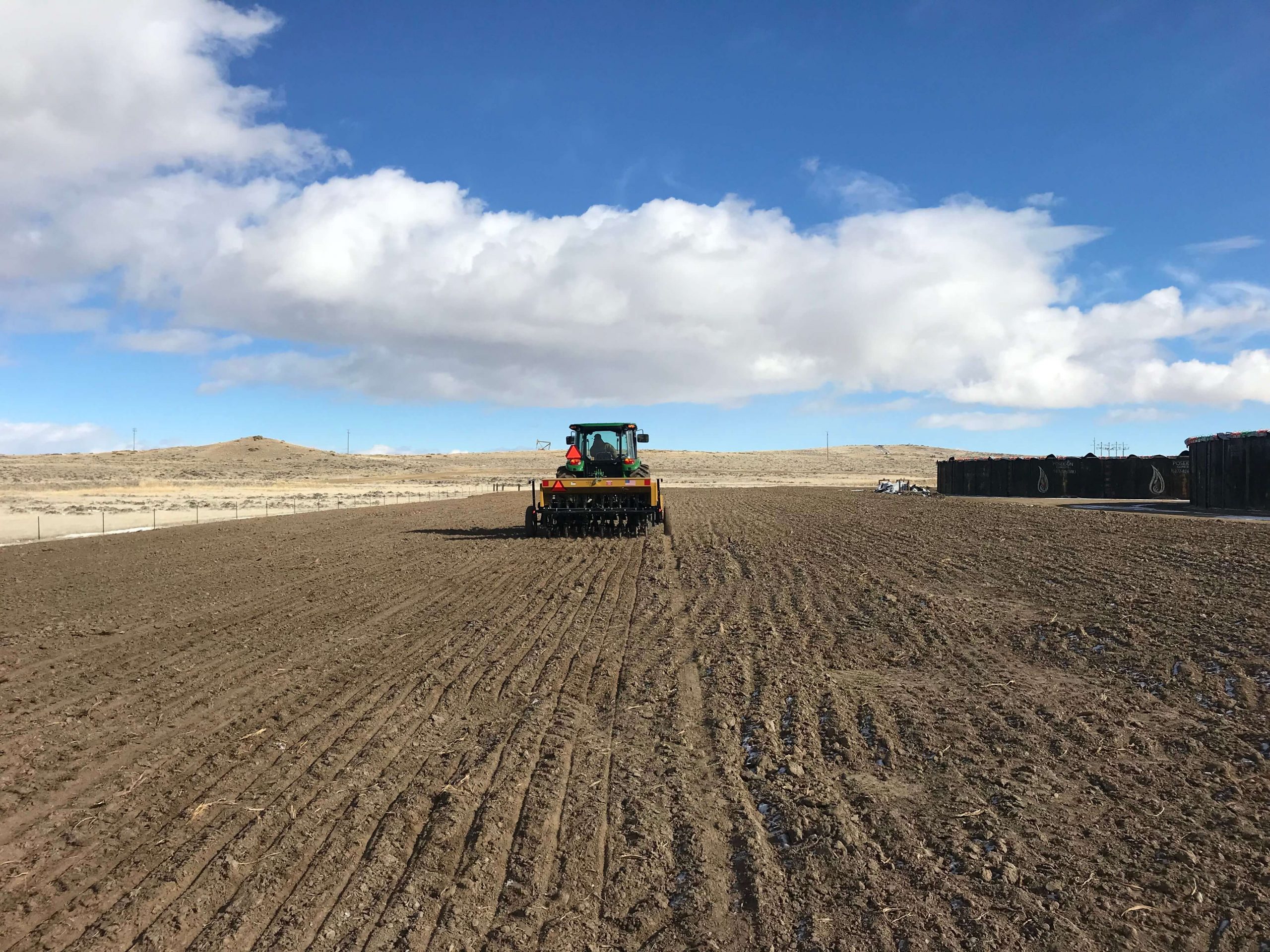
Grouse Mountain provides reclamation strategies for clientele in Oil and Gas and Renewable energy, including Anschutz Oil Company, Anschutz Exploration Company, and Innogy. Grouse Mountain’s extensive equipment and local knowledge provides high-quality reclamation services to companies and landowners to restore land and soil health after construction and provide habitat for wildlife.
To reclaim a project is to return a location to its former condition. Many landowners talk to agencies to help develop custom seed mixes depending on project funds, and revegetate the area with native and resilient plants. These plants can not only be helpful to ranchers and cattle grazing, but to keep unwanted weed species from growing. Reclamation is often a requirement of development on land owned by Bureau of Land Management and various state and federal agencies.
“Typically, a client will reach out to Grouse Mountain and say they need reclamation completed based on landowner requirements,” said Carter Nielsen, the Lead Reclamation Specialist for Grouse Mountain Environmental Consultants. “We go through the whole process with clients, giving them our tentative schedule of when we would be on-site as well as making sure that the dirt workers come in and put topsoil down properly. We will also research the ecological site descriptions of a particular area, and if a landowner doesn’t already have a seed mix in mind, we will create a custom seed mix based on the history of the plant community and what the soil type of the area actually is. That’s where we come up with the type of species that we want to plant.”
Topsoil management is pivotal to the process and, while reclamation specialists don’t usually perform the work themselves, they can oversee the excavators to ensure the topsoil placement is done correctly.
“Topsoil management usually comes up in a disturbed area, such as an oil pad or pipeline. If the topsoil is not distributed properly and workers are mixing topsoil with subsoil, it makes our job a lot harder and plants don’t grow very well,” Nielsen warned. “There are a lot of people out there who work on smaller projects, and they don’t realize they should salvage the topsoil to use later on. They don’t do that, and they end up burying and mixing the topsoil with the soil below it, which results in the area not working as viable soil for ten or twenty years. This goes for a huge oil company or for Joe down the street, trying to dig up his driveway. Topsoil handling is the number one key for any successful reclamation project.”
The purpose of reclamation, according to Nielsen, is to rehabilitate a disturbed site bringing it back to its former state, as this helps minimize invasive species.
“The faster you put native seed mix in the ground with the proper plants surrounding it, the less chance there is for weeds such as cheatgrass and Russian thistle to grow,” he said. “That is the main purpose of reclamation and the secondary purpose is to stabilize the actual surface. When it’s a bigger project, the reclamation aspect ties into the stormwater aspect. If a rainstorm happens, you’re going to get a lot of erosion and runoff, and there’s potential to lose your topsoil depending on how the project is set up and sloped. Raindrop impact is actually one of the leading causes for erosion.”
When a rainstorm occurs, water droplets hit the soil surface causing soil particles to dislodge and increase erosion. There are three different types of water erosion: sheet erosion, rill erosion, and gully erosion, all of which impact the soil structure of a given area. To prevent or at least lessen the effects, construction sites are required to provide a well-developed and adaptable Stormwater Pollution Prevention Plan (SWPPP). This is necessary to prevent stormwater contamination and to remain compliant with the Clean Water Act. Grouse Mountain assists with all aspects of stormwater programs, from developing a Notice of Intent (NOI) to preparation of the final release.
“Based on DEQ (Department of Environmental Quality) regulations, if you’re disturbing anything more than one acre of land, you need to create a Stormwater Pollution Prevention Plan. These plans essentially just state how you’re going to develop land, making sure that sediment and other pollutants don’t make it into the state water sources, such as creeks and streams,” Nielsen stated. “They do this with the use of proper BMPs, which stands for Best Management Practices. According to the DEQ, any site from one acre to five acres is considered a small construction site, and you don’t have to submit any documentation. You still need to have a stormwater plan and you still need to conduct inspections to ensure that your sites aren’t eroding, but you don’t have to submit anything. Anything over five acres requires you to submit a Stormwater Plan to the DEQ along with a Notice of Intent.”
The consultants at Grouse Mountain are able to assist with this process, helping with NOI preparation, the actual SWPPP development, site map preparation, erosion control planning and design, BMP installation and maintenance, SWPPP inspections, compliance inspections and more.
“At Grouse Mountain, we’re able to see the project completely through,” Nielsen said. “A lot of companies, such as engineer firms will just prepare a plan and then pass it off to another contractor to install the BMPs, and then a different contractor to actually perform the inspections. But we’re kind of a one-stop shop. We can create your plan and your site map and tell you what BMPs are needed, and we can also do your inspections and maintenance. I think Grouse Mountain is one of the best environmental consulting firms out there. We do such a wide array of tasks and we’re mainly a one-stop shop for oil and gas companies, but we really want to help out our community in any way we can as well.”
For more information about Grouse Mountain Environmental Consultants, or to schedule a consultation, visit https://grousemtnconsultants.com/ or call 307-684-2112.
ESA Phase 1

Some of us have been there, purchasing the perfect business or property, only to find out later it was a perfectly wrapped mess with a hidden history. Grouse Mountain Environmental Consultants can easily help you avoid that mess by completing a Phase I Environmental Site Assessment (ESA).
Phase I ESAs are commonly used to identify environmental liabilities as a result of current or previous practices associated with a commercial property or asset. “Phase I ESAs are evaluations that occur prior to or during the transaction of a property,” said David Huber, a Project Manager for Grouse Mountain. The intent of the assessment is to investigate if current or historic practices have negatively impacted soil or groundwater resources or currently pose a threat to the environment or human health. Contamination can occur from past uses of the location, such as, a leaking underground fuel tank that went unnoticed. Identifying these liabilities provides the lender, buyer, or seller full disclosure of their obligations when loaning, buying, or selling the property. The completion of a Phase I ESA prior to a real estate transaction can be used to attain ‘innocent landowner status’ under the requirements of CERCLA (Comprehensive Environmental Response, Compensation and Liability Act). This means; at the time of the Phase I the location had no reasonably ascertainable issues and the owner should not be held accountable for contamination that occurred prior to change in ownership.
“Usually, we conduct a site visit and visually assess everything that is associated with the property,” Huber stated. “We conduct interviews with the property owners or past property owners to determine if they’re aware of any known contaminants, and if they can provide us with information about where and when things might have happened. We do an in-house records review, and also use a service that queries a number of state, local, and federal databases. Sometimes things will come up and those database queries will show if there has been a past event or even current ongoing mitigation associated with the property.”
Grouse Mountain personnel has nearly two decades of experience performing Phase I ESA’s. Their team consists of regulatory and permitting specialists, wildlife biologists, botanists, National Environmental Policy Act (NEPA) specialists, hydrologists, reclamation specialists and so much more. They have managed projects throughout Wyoming, Montana, both Dakotas, Colorado, Idaho, Utah and New Mexico. The experience, talent, and passion for what they do makes Grouse Mountain the ideal consulting firm to assist with all your project needs.
“We’re the right company for the job,” Huber stated. “We have a fast turnaround time and are very responsive with these types of projects. We’re also cost competitive. Whether it’s for commercial properties, vacant lands or, oil and gas assets, we address them all and, if need be, we are equipped to carry out Phase II.”
News Release - Casper Asks Citizens to Help Identify African American Historical Sites
Primary goal is to identify sites related to African American settlement/history

For Immediate Release
Contact:
Craig Collins, City Planner
Community Development Department
ccollins@casperwy.gov
307.235.7579
Casper, Wyoming (June 23, 2021) – The City of Casper is asking citizens for information that can help in the research and identification of sites related to African American settlement/history in Casper. “This project is part of our desire to diversity Casper’s Historic Preservation efforts,” explained City Planner Craig Collins.
The project is funded by a federal grant administered by the Wyoming State Historic Preservation Office. The grant has allowed Casper to hire a consultant archaeologist who will research and survey any suggested sites. According to Collins, a cultural resource survey is the basic building block for any local preservation program. If citizens have information regarding an existing building or structure within the City of Casper that may be, or is related to historic African American settlement, they are advised to contact City's consultant, Grouse Mountain Lead Archaeologist Becca Mashak at rmashak@gmecwy.com or 307-684-2112.
Collins stated, “Our primary goal is to identify and document structural and/or architectural resources related to African American settlement. This is the first step in preserving, recognizing, and facilitating future listings on the National Register of Historic Places.”
Grouse Mountain Volunteers for Christmas Bird Count 2021
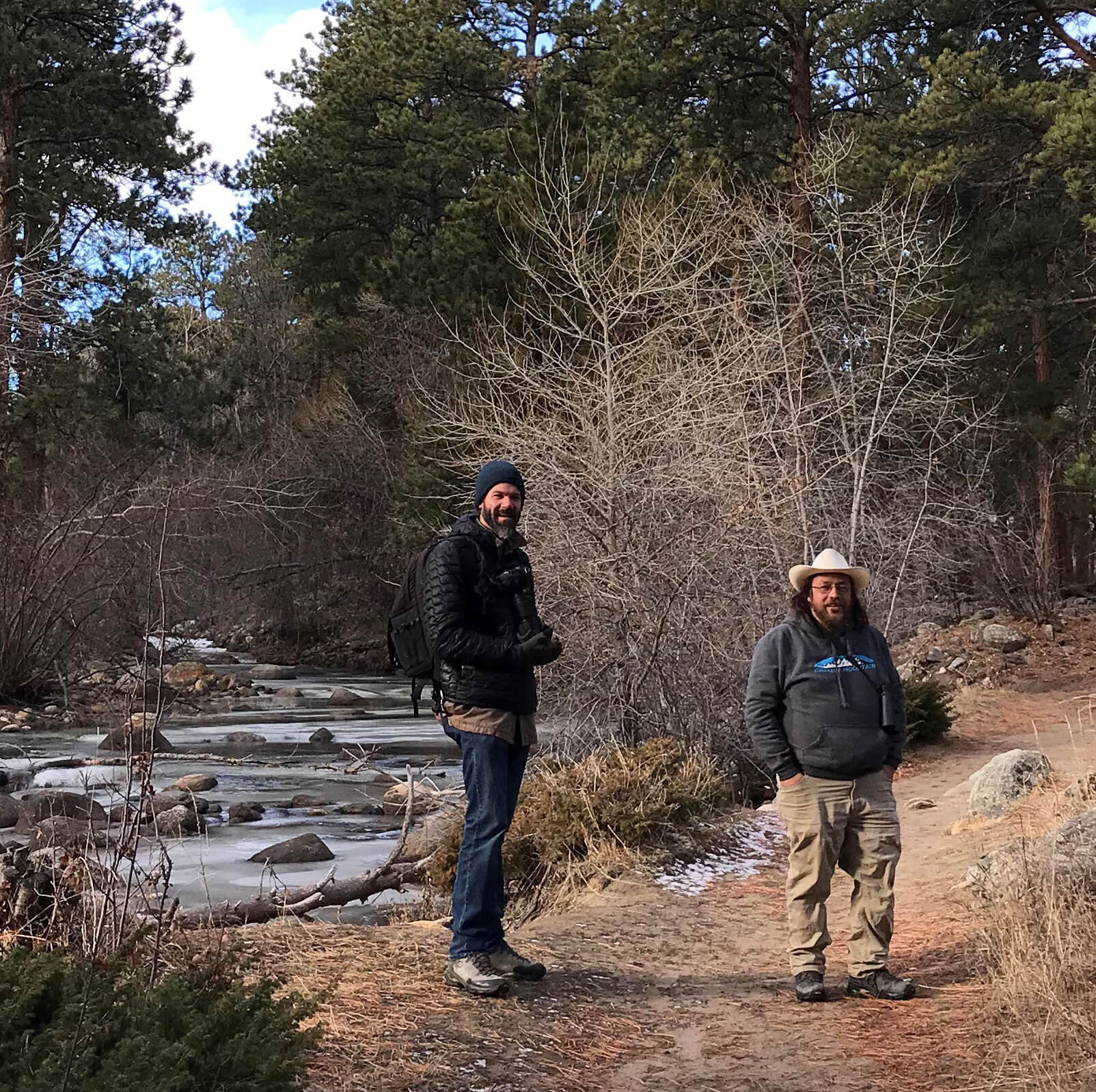
Grouse Mountain team members Greg, Hillary, and Kevin participated in the Audubon Society’s Christmas Bird Count (CBC) on Sunday, December 19th. The annual CBC began in 1900 to collect census data on bird populations. This information helps organizations assess the health of bird populations and guide conservation efforts. We identified and counted 18 distinct bird species during our first survey and 10 during our second. During this 40th annual Bighorn Chapter census, volunteers counted over 3,000 birds identified in 57 species, contributing to a very exciting Christmas Bird Count!
Source: https://www.audubon.org/conservation/history-christmas-bird-count
Ensure Project Compliance: Grouse Mountain Biologists Authorized for Endangered Prairie-Chicken Surveys
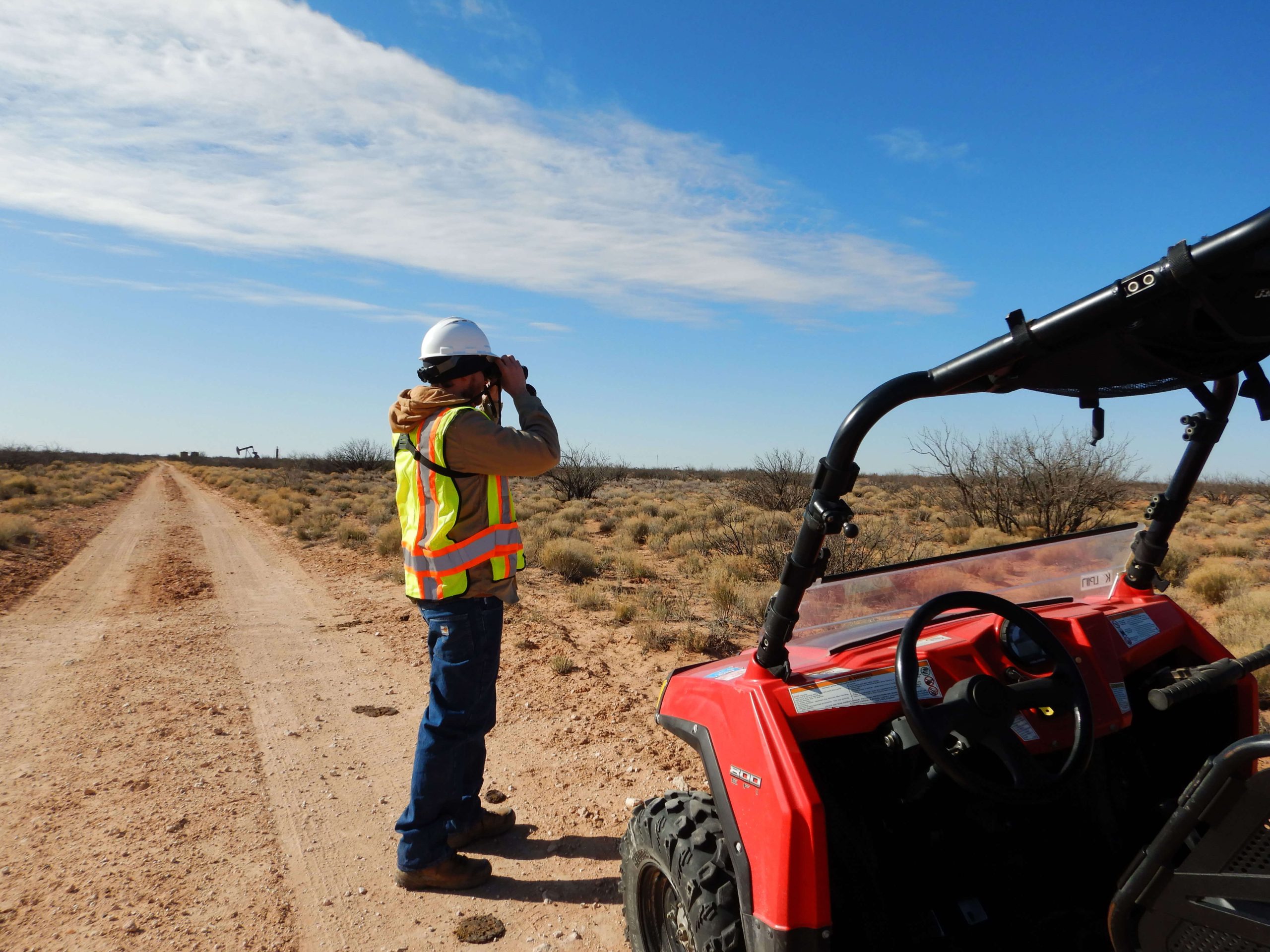
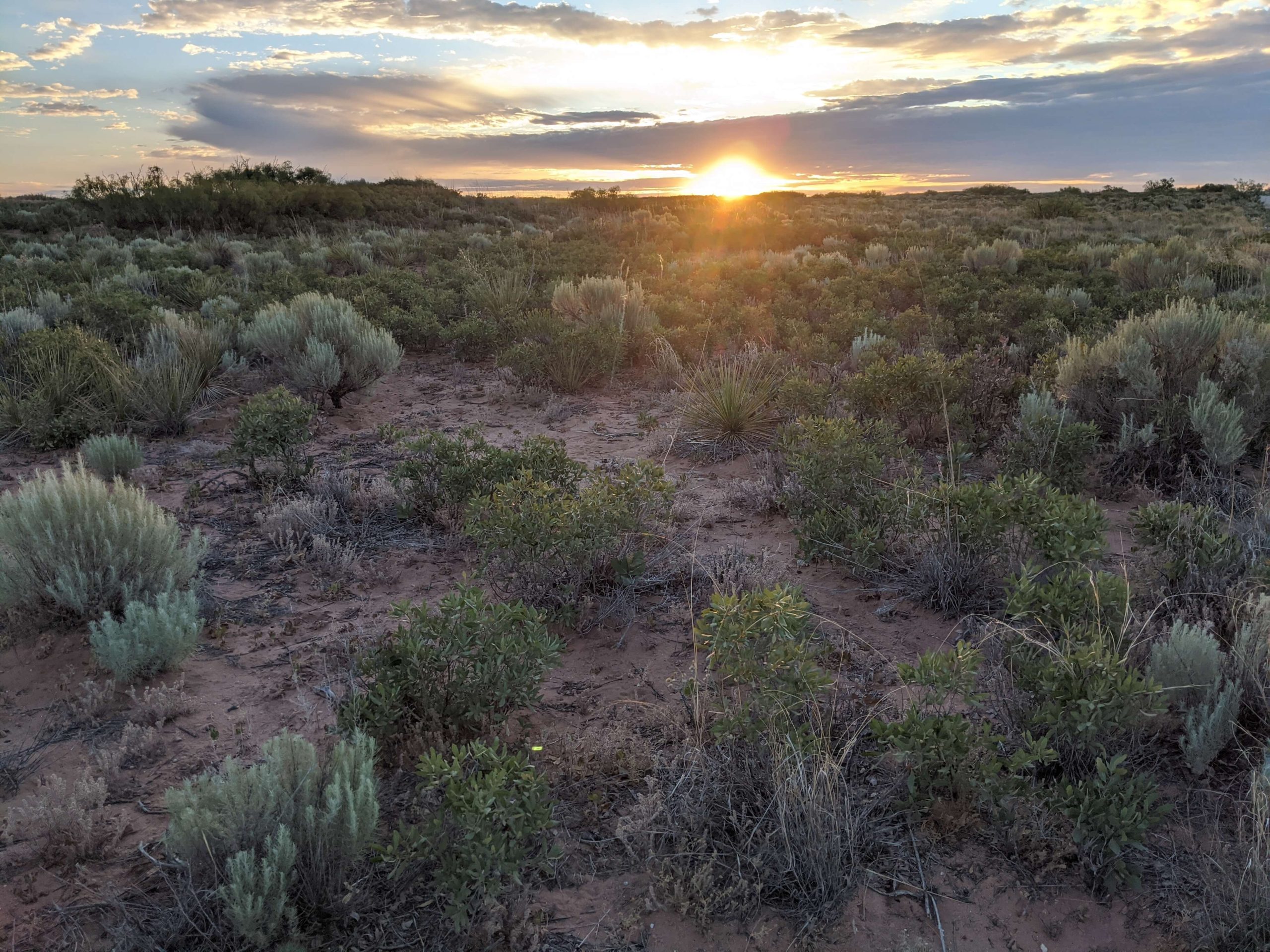

Need lesser prairie-chicken surveys this year? The bird, which was recently listed under the Endangered Species Act, is found in New Mexico, Texas, Oklahoma, Colorado, and Kansas. Grouse Mountain biologists have been approved by the US Fish and Wildlife Service to conduct surveys this season. Let us help you get your surveys completed this year to ensure compliance for your projects.

PROJECT FEED

If you need to speak with someone immediately, we can be reached at 307.684.2112.
 Then & Now
Then & Now Expert Cultural Resource Management: Class I, II, & III Surveys for Your Project
Expert Cultural Resource Management: Class I, II, & III Surveys for Your Project Pocket Gopher Trapping Surveys
Pocket Gopher Trapping Surveys On-Call Environmental Compliance
On-Call Environmental Compliance Abandoned Mine Site Environmental Resource Evaluations
Abandoned Mine Site Environmental Resource Evaluations Watershed Rangeland Health Assessments
Watershed Rangeland Health Assessments Wildlife Studies for Wind Energy Development
Wildlife Studies for Wind Energy Development Artificial Raptor Perch Fabrication and Installation- Military Department Lands
Artificial Raptor Perch Fabrication and Installation- Military Department Lands Reclamation
Reclamation Assessment, Inventory, and Monitoring (AIM) Strategy
Assessment, Inventory, and Monitoring (AIM) Strategy Water Sampling
Water Sampling Nesting Surveys in New Mexico’s Cibola National Forest
Nesting Surveys in New Mexico’s Cibola National Forest Class III Cultural Resource Investigation
Class III Cultural Resource Investigation Windfarm Reclamation Project
Windfarm Reclamation Project Data Logger Project with Kevin and Katie
Data Logger Project with Kevin and KatieNEWS FEED

 Ensure Project Compliance: Grouse Mountain Biologists Authorized for Endangered Prairie-Chicken Surveys
Ensure Project Compliance: Grouse Mountain Biologists Authorized for Endangered Prairie-Chicken Surveys Grouse Mountain Volunteers for Christmas Bird Count 2021
Grouse Mountain Volunteers for Christmas Bird Count 2021 Casper Asks Citizens to Help Identify African American Historical Sites
Casper Asks Citizens to Help Identify African American Historical Sites ESA Phase 1
ESA Phase 1 Carter Nielsen on Reclamation Services and Stormwater Services
Carter Nielsen on Reclamation Services and Stormwater Services Katie Taylor on Wildlife Surveys
Katie Taylor on Wildlife Surveys Wildlife Season
Wildlife Season
PROJECT FEED

If you need to speak with someone immediately, we can be reached at 307.684.2112.
 Then & Now
Then & Now
Then & Now
When we’re not in the oil fields or on abandoned mine lands, sometimes our projects bring us to places like a riverbank on the Split Rock Ranch! The Grouse Mountain Cultural Resources Department was asked to conduct a Class III Survey as part of a larger project under the jurisdiction of the United States Army Corps of Engineers (USACE) to restore and enhance aquatic resources associated with the Sweetwater River in Natrona County, Wyoming.
Prior to restoration efforts, the banks of the river were systematically surveyed for cultural material. Mid-survey, our cultural resource specialists decided to stop for a moment to take in the incredible view and snap a few photos. While back at the office and conducting background research for the report, they stumbled upon a neat discovery. In 1870, pioneer photographer William Henry Jackson took a photo of the Hayden Survey Camp (learn more here) at nearly the exact same location our cultural resource specialists stopped for their photos! Despite changes due to livestock grazing and human development, the landscape has remained remarkably consistent over the past 150+ years.
Have questions on how we can help you with your next project? Reach out to us at rmashak@gmecwy.com!
 Expert Cultural Resource Management: Class I, II, & III Surveys for Your Project
Expert Cultural Resource Management: Class I, II, & III Surveys for Your Project
Expert Cultural Resource Management: Class I, II, & III Surveys for Your Project
Every development project, from new construction to energy infrastructure, carries a responsibility to respect and protect our shared past. Navigating environmental regulations, especially those involving cultural resources, can be complex, often requiring specialized expertise to ensure compliance and avoid costly delays. That’s where Grouse Mountain Environmental Consultants comes in. We offer comprehensive Cultural Resource Management (CRM) services, including essential Class I, II, and III Surveys, to help your project proceed smoothly and responsibly.
What is Cultural Resource Management?
Cultural Resource Management (CRM) is the professional practice of managing cultural heritage as part of development projects. It involves identifying, evaluating, and mitigating impacts to archaeological sites, historic properties, traditional cultural places, and other significant cultural assets. The goal is to balance modern development with the preservation of invaluable historical and archaeological records, ensuring compliance with federal and state regulations like National Historic Preservation Act (NHPA).
The Importance of CRM for Your Project’s Success
Ignoring potential cultural resources can lead to significant project delays, unexpected costs, legal complications, and damage to your reputation. Engaging an experienced cultural resource management firm early in your project planning saves time and money by:
- Ensuring Regulatory Compliance: Meeting federal (e.g., Section 106, NEPA) and state requirements.
- Preventing Costly Delays: Identifying and addressing potential issues proactively, before construction begins.
- Protecting Valuable Heritage: Responsibly managing and preserving archaeological and historical sites.
- Enhancing Project Efficiency: Providing clear pathways and solutions for cultural resource considerations.
Our Expert CRM Services: Class I, II, and III Archaeological Surveys
At Grouse Mountain Environmental Consultants, our team of qualified archaeologists and historians provides the full spectrum of archaeological survey services, tailored to your project’s scope and regulatory needs.
Class I: The Foundational Literature Review & Archival Search
A Class I cultural resource survey is typically the first step in the CRM process. It’s a comprehensive desk-based review and archival search of existing documentation. Our experts meticulously examine:
- Previously recorded archaeological sites and historic properties.
- Relevant historical maps, aerial photographs, and land records.
- Environmental data that might indicate areas of high archaeological potential.
The purpose of a Class I survey is to identify known cultural resources and assess the potential for unrecorded resources within your project area, helping to evaluate initial risks and guide subsequent survey phases.
Class II: Reconnaissance-Level Field Survey
Following a Class I, a Class II cultural resource survey involves a reconnaissance-level field survey of the project area. This typically includes:
- Limited field investigation and sampling.
- Walking transects across selected portions of the property.
- Shovel testing in areas of high potential to confirm or deny the presence of resources.
A Class II archaeological survey is ideal for large linear projects or broad areas where a general understanding of cultural resource presence is needed without exhaustive coverage. It helps to refine the scope for more intensive investigations if required.
Class III: Intensive Survey & Detailed Site Inventory
The Class III cultural resource survey is the most thorough and intensive level of investigation. This involves:
- 100% pedestrian coverage of the project area, with archaeologists walking closely spaced transects.
- Systematic shovel testing (excavating small holes) at pre-determined intervals to identify buried cultural materials.
- Detailed identification and recording of all visible cultural resources, from prehistoric campsites to historic structures.
The outcome of a Class III survey is a comprehensive site inventory, including detailed documentation, photographs, mapping, and a thorough assessment of each identified cultural resource’s significance. This intensive level of survey is typically required for projects with high ground disturbance or within areas known for significant cultural sensitivity.
Why Choose Grouse Mountain Environmental Consultants?
Choosing the right cultural resource management partner is crucial for your project’s success. At Grouse Mountain Environmental Consultants, we bring:
- Decades of Experience: Our team possesses extensive knowledge of archaeological methods and regulatory compliance across diverse landscapes.
- Regulatory Acumen: A deep understanding of federal, state, and tribal cultural resource laws and permitting processes.
- Efficiency & Accuracy: We deliver high-quality reports and fieldwork, ensuring your project meets deadlines and compliance standards.
- Collaborative Approach: We work closely with our clients, agencies, and stakeholders to find practical, compliant solutions.
Don’t let cultural resource management become a roadblock for your next development. Partner with Grouse Mountain Environmental Consultants to navigate the complexities, protect our shared heritage, and keep your project on track.
Ready to ensure your project’s cultural resource compliance? Contact Grouse Mountain Environmental Consultants today for a consultation.
Learn more about our Class I, II, and III archaeological survey and site inventory services.
 Pocket Gopher Trapping Surveys
Pocket Gopher Trapping SurveysPocket Gopher Trapping Surveys

The northern pocket gopher is native to Wyoming and its range overlaps that of the sensitive Wyoming pocket gopher. Wyoming pocket gophers are the smallest of the genus Thomomys. Their limited range in south-central Wyoming and general rarity across the landscape has caused them to be listed as Sensitive in the state, requiring further management to protect the species. In the fall of 2022, Grouse Mountain conducted surveys to determine what species of pocket gopher inhabited a gopher complex identified by a BLM Rawlins Field Office biologist on a proposed oil and gas well location. Grouse Mountain biologists set live traps where fresh gopher mounds were identified and all gophers captured were the more prevalent and non-sensitive northern pocket gopher. At the request of the Wyoming Game and Fish Department, our biologists also conducted vegetation surveys at trap sites to examine the hypothesized relationship between pocket gopher species and certain shrub communities.
 On-Call Environmental Compliance
On-Call Environmental ComplianceOn-Call Environmental Compliance
New Mexico Department of Energy, Minerals, and Natural Resources – Abandoned Mine Land (AML) Program
Statewide • January 1, 2017-Present
Grouse Mountain is currently contracted by New Mexico Energy, Minerals, and Natural Resources Department (EMNRD), Mining and Minerals Division, Abandoned Mine Land (AML) Program providing environmental compliance services throughout the state of New Mexico. To date, Grouse Mountain has successfully guided the AML through multiple complex environmental and NEPA compliance tasks and is working with the AML to complete most complex restoration project to-date. Our technical professionals have prepared National Environmental Policy Act documentation (including Biological Assessment/Biological Evaluation (BA/BE), Categorical Exclusions, and Environmental Assessments), conducted natural resource inventories, held public information meetings and performed extensive surface water quality baseline sampling.

Grouse Mountain planned and implemented a water quality monitoring program to ensure compliance with New Mexico Water Quality Standards and the New Mexico Water Quality Act for stormwater conveyances associated with coal waste piles in Madrid, New Mexico. A total of five (5) monitoring sites were selected for water quality testing and analysis within the Area of Potential Effect (APE). Monitoring sites were selected based on accessibility and the ability to meet the objectives of monitoring plan. The monitoring sites consisted of one (1) reference site, two (2) coal waste drainage sites, and two (2) discharge point sites. Each monitoring site was equipped with a Global Water WS705 composite automatic sampler. At each site the automatic samplers were set up in flow trigger mode meaning the samplers initiate intaking water samples when the sensor detects flow. All the designated sites were monitored until water samples are collected for at least five (5) separate rainfall events. Grouse Mountain personnel completed an analytical report for the collected water samples and made recommendations for any chemical constituents that exceed permissible levels.

 Abandoned Mine Site Environmental Resource Evaluations
Abandoned Mine Site Environmental Resource EvaluationsAbandoned Mine Site Environmental Resource Evaluations
Wyoming Department of Environmental Quality Abandoned Mine Land Division
Statewide • January 2017 - Present

Grouse Mountain is contracted by the Wyoming Department of Environmental Quality Abandoned Mine Land Division to perform environmental resource evaluations prior to the reclamation of abandoned mine sites across the state. Our biologists and vegetation specialists travel to the mine sites and perform an inventory of flora and fauna as well as identify any potential direct or indirect impacts the proposed action may have on threatened, endangered, candidate and sensitive species. Potential impacts to bats, migratory birds, big game, wetlands and Waters of the United States are also analyzed.


 Watershed Rangeland Health Assessments
Watershed Rangeland Health AssessmentsWatershed Rangeland Health Assessments
Bureau of Land Management Buffalo Field Office
Johnson and Sheridan Counties • May 2016 – Present

Grouse Mountain’s highly trained team worked closely with the BLM-Buffalo Field Office to coordinate and conduct 228 terrestrial Assessment Inventory and Monitoring (AIM) points and assess 11.75 miles of intermittent and perennial stream segments for Proper Functioning Condition (PFC). Grouse Mountain communicated with private landowners and BLM personnel in order to secure access and identify approved routes to the points. GMEC then created maps and import files to navigate to the points using the approved routes. At each point, our Interdisciplinary Team of three specialists collected a host of site information including: Plot characteristics, photo points, a description of soil profiles and soil characteristics, current land use, presence of erosional features, vegetative cover and composition using line point intercept, vegetation height and sagebrush shape, forage production, and soil stability. The IDT Team then used the collected information to identify the ecological site and state and interpret indicators of rangeland health using seventeen (17) Indicators for Rangeland Health.

 Wildlife Studies for Wind Energy Development
Wildlife Studies for Wind Energy DevelopmentWildlife Studies for Wind Energy Development
Electrical Consultants, Inc.
Eastern Montana • 2017 - 2019

Grouse Mountain was contracted to complete pre-development wildlife studies in compliance with the USFWS Land-Based Wind Energy Guidelines (WEG), Eagle Conservation Plan Guidance, and the Upper Great Plains Wind Energy Programmatic Environmental Impact Statement (DOE/EIS-0408) for a proposed wind energy project in eastern Montana. Eagle and large bird point count surveys, passerine point count surveys, and migration point count station surveys were conducted monthly by our team of experienced wildlife biologists from October 2017 through September 2019. Additional tasks included conducting two years of eagle/raptor nest monitoring and occupancy surveys, sharp-tailed grouse lek surveys, acoustic monitoring surveys for bat species, and the completion of monthly and annual reports.

 Artificial Raptor Perch Fabrication and Installation- Military Department Lands
Artificial Raptor Perch Fabrication and Installation- Military Department LandsArtificial Raptor Perch Fabrication and Installation- Military Department Lands
Wyoming Military Department
Sheridan, Wyoming • 2017

Grouse Mountain worked with the Wyoming Military Department (WYMD) to construct and install five (5) artificial raptor perches on Military Department lands in Sheridan, WY. Our team of wildlife biologists coordinated with WYMD to determine perch placement. Perches were placed within prairie dog colonies to create vantage points for hunting raptors.


 Reclamation
ReclamationReclamation
Grouse Mountain is able to offer a wide variety of reclamation services across the Rocky Mountain Region. If you’re looking for successful revegetation on any surface, Grouse Mountain is here to assist you.

 Assessment, Inventory, and Monitoring (AIM) Strategy
Assessment, Inventory, and Monitoring (AIM) StrategyAssessment, Inventory, and Monitoring (AIM) Strategy
The Bureau of Land Management’s Assessment, Inventory, and Monitoring (AIM) Strategy provides a framework to inventory and quantitatively assess the condition and trend of natural resources on public lands. Our Grouse Mountain teams perform terrestrial core AIM methods to collect vegetation and soil condition data that is provided to the BLM to guide management decisions. For 5 years, we have partnered with BLM field offices throughout Wyoming to implement this strategy and to date have completed 724 AIM points.

 Water Sampling
Water SamplingWater Sampling
Our hydrologists have extensive experience, from large-scale watershed modeling to small-scale stream assessments. We can help with all facets of your project whether you are assessing the condition of aquatic systems, implementing a mitigation strategy, or conducting water quality monitoring. Here is Suman Chitrakar, our in house Hydrologist, sampling a water well for one of our landowners.

 Nesting Surveys in New Mexico’s Cibola National Forest
Nesting Surveys in New Mexico’s Cibola National ForestNesting Surveys in New Mexico’s Cibola National Forest
Grouse Mountain biologists completed pre-construction nesting surveys this summer for a forest thinning project in New Mexico’s Cibola National Forest. Forest thinning is a common land management tool utilized in national forests to reduce the risk of wildfire and create greater biodiversity within tree stands. For this project, only large diameter trees (defined by a specific size) will remain after thinning is completed. These ponderosa pine, juniper, and pinyon pine trees will grow larger and healthier in a thinned stand compared to growing in a dense stand.
During these surveys our biologists looked for active bird nests within the project area. Pre-construction nesting surveys ensure no birds are actively nesting within the project area and could be harmed while work is conducted. If a nest were found, an appropriate distance buffer would be placed around the nest and work within the buffer would not resume till the nest is inactive. These mitigations also ensure an operator is within compliance for the Migratory Bird Treaty Act.
While no active nests were found, our biologists did find numerous inactive cavity nests throughout the project area. Cavities are created by a primary cavity excavator (i.e. woodpeckers) and are important to forest ecosystems as they provide nesting habitat for secondary cavity nesters including smaller birds, bats, small mammals, and falcon and owl species.
For more information about Grouse Mountain Environmental Consultants, or questions on your next New Mexico forestry project, visit https://grousemtnconsultants.com/ or call 505-930-5166.
 Class III Cultural Resource Investigation
Class III Cultural Resource InvestigationClass III Cultural Resource Investigation
Grouse Mountain was contracted by the Colorado Department of Natural Resources on behalf of the Colorado Parks and Wildlife to conduct a Class III cultural resource investigation and site re-evaluations for a road closure and maintenance project in the Dominguez-Escalante National Conservation Area within the greater Colorado Plateau. The project area spanned multiple Townships and Sections in southern Mesa County, Colorado, on lands administered by the Bureau of Land Management (BLM). The project involved pedestrian survey of several recreational roads and UTV trail segments totaling 28 miles, or 350 linear acres, over a 10-day field effort.
During the Class III investigation, Grouse Mountain archaeologists re-located and evaluated 35 known prehistoric and historic archaeological sites, as well as identified an additional 53 undocumented cultural resources. Site types ranged from historic corrals, homesteads, and roads to complex prehistoric campsites, rock art, small chipped stone concentrations, and isolated artifacts. Our team was able to identify specific Native American occupations through artifact analysis and a comprehensive background research of the region. This investigation resulted in numerous National Register of Historic Places evaluations and management recommendations for the BLM Grand Junction Field Office.
These images were taken of a newly discovered rock art site containing charcoal drawings on sandstone. The image on the left is what is visible to the naked eye, while the image on the right used iDStretch, a portable enhancement application. Once applied, additional figures can be seen where the enhancement tool highlights and strengthens the visible drawings.


 Windfarm Reclamation Project
Windfarm Reclamation Project
Windfarm Reclamation Project
Grouse Mountain spent this last reclamation season completing reclamation on 1,728 acres for 119 wind turbine locations and associated facilities. Every acre of this project was disked to reduce post-construction compaction.

We then spread straw mulch at a rate of two tons per acre and disked the straw mulch into the soil. Spreading straw on recently disturbed areas helps to minimize erosion and provides nutrients for new seedlings. Disking straw into the soil is comparable to crimping and helps keep the straw in place until revegetation occurs.

Disking straw mulch is not essential, but some clients and landowners prefer this method to incorporate organic matter into the soil. Finally, we drill seeded all disturbed areas using custom seed mixes for each landowner. Seed mixes are generally selected based on historical vegetation, soil types, and land use purposes.

 Data Logger Project with Kevin and Katie
Data Logger Project with Kevin and Katie
Data Logger Project with Kevin and Katie
Grouse Mountain team members recently deployed a new data logger alongside a bat recorder on a project site in eastern Montana. The recorder captures ultrasonic bat calls enabling us to determine species presence and seasonal changes in species occurrence. Collecting this information is recommended for two years prior to development of wind energy per the U.S. Fish and Wildlife Service’s Land-Base Wind Energy Guidelines. The data logger queries the bat recorder nightly and provides status back to our wildlife biologists giving us a pulse on operations of the system. Learn more about the wildlife services we provide to wind energy developers. https://grousemtnconsultants.com/services/wildlife-resources/
NEWS FEED

 Ensure Project Compliance: Grouse Mountain Biologists Authorized for Endangered Prairie-Chicken Surveys
Ensure Project Compliance: Grouse Mountain Biologists Authorized for Endangered Prairie-Chicken Surveys
Ensure Project Compliance: Grouse Mountain Biologists Authorized for Endangered Prairie-Chicken Surveys
Need lesser prairie-chicken surveys this year? The bird, which was recently listed under the Endangered Species Act, is found in New Mexico, Texas, Oklahoma, Colorado, and Kansas. Grouse Mountain biologists have been approved by the US Fish and Wildlife Service to conduct surveys this season. Let us help you get your surveys completed this year to ensure compliance for your projects.



 Grouse Mountain Volunteers for Christmas Bird Count 2021
Grouse Mountain Volunteers for Christmas Bird Count 2021
Grouse Mountain Volunteers for Christmas Bird Count 2021

Grouse Mountain team members Greg, Hillary, and Kevin participated in the Audubon Society’s Christmas Bird Count (CBC) on Sunday, December 19th. The annual CBC began in 1900 to collect census data on bird populations. This information helps organizations assess the health of bird populations and guide conservation efforts. We identified and counted 18 distinct bird species during our first survey and 10 during our second. During this 40th annual Bighorn Chapter census, volunteers counted over 3,000 birds identified in 57 species, contributing to a very exciting Christmas Bird Count!
Source: https://www.audubon.org/conservation/history-christmas-bird-count
 Casper Asks Citizens to Help Identify African American Historical Sites
Casper Asks Citizens to Help Identify African American Historical SitesNews Release - Casper Asks Citizens to Help Identify African American Historical Sites
Primary goal is to identify sites related to African American settlement/history

For Immediate Release
Contact:
Craig Collins, City Planner
Community Development Department
ccollins@casperwy.gov
307.235.7579
Casper, Wyoming (June 23, 2021) – The City of Casper is asking citizens for information that can help in the research and identification of sites related to African American settlement/history in Casper. “This project is part of our desire to diversity Casper’s Historic Preservation efforts,” explained City Planner Craig Collins.
The project is funded by a federal grant administered by the Wyoming State Historic Preservation Office. The grant has allowed Casper to hire a consultant archaeologist who will research and survey any suggested sites. According to Collins, a cultural resource survey is the basic building block for any local preservation program. If citizens have information regarding an existing building or structure within the City of Casper that may be, or is related to historic African American settlement, they are advised to contact City's consultant, Grouse Mountain Lead Archaeologist Becca Mashak at rmashak@gmecwy.com or 307-684-2112.
Collins stated, “Our primary goal is to identify and document structural and/or architectural resources related to African American settlement. This is the first step in preserving, recognizing, and facilitating future listings on the National Register of Historic Places.”
 ESA Phase 1
ESA Phase 1ESA Phase 1

Some of us have been there, purchasing the perfect business or property, only to find out later it was a perfectly wrapped mess with a hidden history. Grouse Mountain Environmental Consultants can easily help you avoid that mess by completing a Phase I Environmental Site Assessment (ESA).
Phase I ESAs are commonly used to identify environmental liabilities as a result of current or previous practices associated with a commercial property or asset. “Phase I ESAs are evaluations that occur prior to or during the transaction of a property,” said David Huber, a Project Manager for Grouse Mountain. The intent of the assessment is to investigate if current or historic practices have negatively impacted soil or groundwater resources or currently pose a threat to the environment or human health. Contamination can occur from past uses of the location, such as, a leaking underground fuel tank that went unnoticed. Identifying these liabilities provides the lender, buyer, or seller full disclosure of their obligations when loaning, buying, or selling the property. The completion of a Phase I ESA prior to a real estate transaction can be used to attain ‘innocent landowner status’ under the requirements of CERCLA (Comprehensive Environmental Response, Compensation and Liability Act). This means; at the time of the Phase I the location had no reasonably ascertainable issues and the owner should not be held accountable for contamination that occurred prior to change in ownership.
“Usually, we conduct a site visit and visually assess everything that is associated with the property,” Huber stated. “We conduct interviews with the property owners or past property owners to determine if they’re aware of any known contaminants, and if they can provide us with information about where and when things might have happened. We do an in-house records review, and also use a service that queries a number of state, local, and federal databases. Sometimes things will come up and those database queries will show if there has been a past event or even current ongoing mitigation associated with the property.”
Grouse Mountain personnel has nearly two decades of experience performing Phase I ESA’s. Their team consists of regulatory and permitting specialists, wildlife biologists, botanists, National Environmental Policy Act (NEPA) specialists, hydrologists, reclamation specialists and so much more. They have managed projects throughout Wyoming, Montana, both Dakotas, Colorado, Idaho, Utah and New Mexico. The experience, talent, and passion for what they do makes Grouse Mountain the ideal consulting firm to assist with all your project needs.
“We’re the right company for the job,” Huber stated. “We have a fast turnaround time and are very responsive with these types of projects. We’re also cost competitive. Whether it’s for commercial properties, vacant lands or, oil and gas assets, we address them all and, if need be, we are equipped to carry out Phase II.”
 Carter Nielsen on Reclamation Services and Stormwater Services
Carter Nielsen on Reclamation Services and Stormwater ServicesCarter Nielsen on Reclamation Services and Stormwater Services of Grouse Mountain Environmental Consultants

Grouse Mountain provides reclamation strategies for clientele in Oil and Gas and Renewable energy, including Anschutz Oil Company, Anschutz Exploration Company, and Innogy. Grouse Mountain’s extensive equipment and local knowledge provides high-quality reclamation services to companies and landowners to restore land and soil health after construction and provide habitat for wildlife.
To reclaim a project is to return a location to its former condition. Many landowners talk to agencies to help develop custom seed mixes depending on project funds, and revegetate the area with native and resilient plants. These plants can not only be helpful to ranchers and cattle grazing, but to keep unwanted weed species from growing. Reclamation is often a requirement of development on land owned by Bureau of Land Management and various state and federal agencies.
“Typically, a client will reach out to Grouse Mountain and say they need reclamation completed based on landowner requirements,” said Carter Nielsen, the Lead Reclamation Specialist for Grouse Mountain Environmental Consultants. “We go through the whole process with clients, giving them our tentative schedule of when we would be on-site as well as making sure that the dirt workers come in and put topsoil down properly. We will also research the ecological site descriptions of a particular area, and if a landowner doesn’t already have a seed mix in mind, we will create a custom seed mix based on the history of the plant community and what the soil type of the area actually is. That’s where we come up with the type of species that we want to plant.”
Topsoil management is pivotal to the process and, while reclamation specialists don’t usually perform the work themselves, they can oversee the excavators to ensure the topsoil placement is done correctly.
“Topsoil management usually comes up in a disturbed area, such as an oil pad or pipeline. If the topsoil is not distributed properly and workers are mixing topsoil with subsoil, it makes our job a lot harder and plants don’t grow very well,” Nielsen warned. “There are a lot of people out there who work on smaller projects, and they don’t realize they should salvage the topsoil to use later on. They don’t do that, and they end up burying and mixing the topsoil with the soil below it, which results in the area not working as viable soil for ten or twenty years. This goes for a huge oil company or for Joe down the street, trying to dig up his driveway. Topsoil handling is the number one key for any successful reclamation project.”
The purpose of reclamation, according to Nielsen, is to rehabilitate a disturbed site bringing it back to its former state, as this helps minimize invasive species.
“The faster you put native seed mix in the ground with the proper plants surrounding it, the less chance there is for weeds such as cheatgrass and Russian thistle to grow,” he said. “That is the main purpose of reclamation and the secondary purpose is to stabilize the actual surface. When it’s a bigger project, the reclamation aspect ties into the stormwater aspect. If a rainstorm happens, you’re going to get a lot of erosion and runoff, and there’s potential to lose your topsoil depending on how the project is set up and sloped. Raindrop impact is actually one of the leading causes for erosion.”
When a rainstorm occurs, water droplets hit the soil surface causing soil particles to dislodge and increase erosion. There are three different types of water erosion: sheet erosion, rill erosion, and gully erosion, all of which impact the soil structure of a given area. To prevent or at least lessen the effects, construction sites are required to provide a well-developed and adaptable Stormwater Pollution Prevention Plan (SWPPP). This is necessary to prevent stormwater contamination and to remain compliant with the Clean Water Act. Grouse Mountain assists with all aspects of stormwater programs, from developing a Notice of Intent (NOI) to preparation of the final release.
“Based on DEQ (Department of Environmental Quality) regulations, if you’re disturbing anything more than one acre of land, you need to create a Stormwater Pollution Prevention Plan. These plans essentially just state how you’re going to develop land, making sure that sediment and other pollutants don’t make it into the state water sources, such as creeks and streams,” Nielsen stated. “They do this with the use of proper BMPs, which stands for Best Management Practices. According to the DEQ, any site from one acre to five acres is considered a small construction site, and you don’t have to submit any documentation. You still need to have a stormwater plan and you still need to conduct inspections to ensure that your sites aren’t eroding, but you don’t have to submit anything. Anything over five acres requires you to submit a Stormwater Plan to the DEQ along with a Notice of Intent.”
The consultants at Grouse Mountain are able to assist with this process, helping with NOI preparation, the actual SWPPP development, site map preparation, erosion control planning and design, BMP installation and maintenance, SWPPP inspections, compliance inspections and more.
“At Grouse Mountain, we’re able to see the project completely through,” Nielsen said. “A lot of companies, such as engineer firms will just prepare a plan and then pass it off to another contractor to install the BMPs, and then a different contractor to actually perform the inspections. But we’re kind of a one-stop shop. We can create your plan and your site map and tell you what BMPs are needed, and we can also do your inspections and maintenance. I think Grouse Mountain is one of the best environmental consulting firms out there. We do such a wide array of tasks and we’re mainly a one-stop shop for oil and gas companies, but we really want to help out our community in any way we can as well.”
For more information about Grouse Mountain Environmental Consultants, or to schedule a consultation, visit https://grousemtnconsultants.com/ or call 307-684-2112.
 Katie Taylor on Wildlife Surveys
Katie Taylor on Wildlife SurveysKatie Taylor on Wildlife Surveys

Grouse Mountain Environmental Consultants specializes in environmental permitting and compliance services throughout the Rocky Mountain region. Those services include Federal and State permitting, GIS and Database solutions, Phase I Environmental Site assessments, reclamation and remediation, water monitoring and more. Some of the most essential services that Grouse Mountain offers are Wildlife Surveys, performed by wildlife biologists with extensive experience in the field.
One of those biologists is Katie Taylor, the Lead Wildlife Biologist and Project Manager at Grouse Mountain. Taylor completed her undergraduate in Washington State, before receiving her master’s degree from the University of Wyoming. During her studies, Taylor specialized in wildlife research relating to big game, which led her to Grouse Mountain Environmental Consultants.
“We provide a wide range of wildlife services for our clients,” Taylor stated. “As Wildlife Biologists, we’re acting as the middle-man to help our clients make sure that they’re meeting all federal and state wildlife regulations in pursuance of their development projects.”
Those projects can take on a variety of forms, depending on the region and its regulations. It also depends on the species; whether they’re considered ‘special status,’ species of concern, threatened or endangered, etc.
“As wildlife biologists, we get into this line of work because we love being outside,” she said. “We love learning that way. I really enjoy the avian raptor and small bird avian point counts. I love the nest monitoring surveys that we do- those are some of my favorites.”
But Taylor and her compatriots know that they also have a job to do, and they are happy to do it.
“Generally, in the spring, we do a lot of eagle and raptor nest surveys and monitoring. We’re trying to get an idea of how many territories related to which species there are, and what nests they might be using within those territories and how that might change from year to year. We compile the information to provide to the relevant agencies to supplement permit applications.”
Essentially, the wildlife surveys that Taylor and the team at Grouse Mountain conduct are designed to help their clients conduct business in a way that is safe for surrounding wildlife, while also ensuring that their clients are acting within the guidelines and regulations of the given area. It’s a lot to navigate and a lot of things can fall through the cracks, unless you have a team like Grouse Mountain Environmental Consultants to ensure that doesn’t happen.
The work that Grouse Mountain does for their clients is unparalleled and, Taylor says, a big reason for that is the team that has been assembled by Jenna Foss and Jason Sutton, the principal owners of Grouse Mountain Environmental Consultants.
“We work with great people at Grouse Mountain,” Taylor stated. “We have such amazing people on our staff. Everybody brings something different to the table and we all make each other better. We are a growing company, but we still have this small company feel, with small company values. We bring those values to our clients as well. We’re very personable. We have actual relationships with our clients and it’s rewarding when you work through a long-term project and you’re invested in that relationship as much as you’re invested in the actual work.”
For more information about Grouse Mountain Environmental Consultants, or to schedule a consultation, visit https://grousemtnconsultants.com/ or call 307-684-2112.
 Wildlife Season
Wildlife SeasonWildlife Season

When Jason Sutton and Jenna Foss first started Grouse Mountain Environmental Consultants in 2007, their initial goal was to provide federal oil and gas permitting, as well as environmental consulting services to the Powder River Basin. As the principal owners of the company, Jason and Jenna’s mission was, and still is, to deliver the highest-level professionalism and experience to their clients by providing creative solutions and offering timely, responsive services.
Those services have grown to include many aspects, including helping clients obtain federal Applications for Permits to Drill (APDs), proposed development for renewable energy, navigating policies surrounding greater sage grouse management and more. Some of the most important services Grouse Mountain offers, however, involve the upcoming wildlife season.
“One of the biggest services we offer at Grouse Mountain is our wildlife surveying,” Sutton said. “Whether our clients are planning to build a well location, or upgrade a road or perform any type of new disturbance- a lot of these projects, especially if they have a federal component, have a wildlife survey requirement before they start the actual work.”
Wildlife surveys include a broad spectrum of considerations, often focused on threatened, endangered and sensitive species, avian point count and mortality, eagle, raptor and migratory bird nesting, Bald Eagle winter roosting, bat acoustic monitoring, sage-grouse, sharp-tailed grouse and lesser prairie-chicken lek inventory, small mammals, big game and more. Grouse Mountain Environmental Consultants provide all of these services in an efficient, all-encompassing way designed to offer support and guidance to their clients throughout the wildlife season.
“Depending on where our clients are located, our surveyors have to conduct these surveys within a certain time window,” Sutton stated. “Specifically with our Buffalo office [for example], our wildlife biologists will make three visits over the course of the spring to make sure that they get an accurate representation of what’s out there. So, they will go visit the site, then they will wait 10 days and visit the site again. Then, they will wait another 10 days and visit the site a third time and compile their results. Then, they’ll submit that information back to the agency and the agency will use that information to determine whether they are going to restrict activities or not.”
Grouse Mountain also partners with clients to navigate environmental regulatory processes, from pre-planning through post-development project phases. They design and implement wildlife studies and mitigation strategies that are compliant with federal and state regulations for threatened and endangered species, species of concern, and special status plant and animal species.
“We have very experienced wildlife biologists,” Foss revealed. “Many of them have been doing this kind of work for more than 10 years. [At Grouse Mountain], we’re very familiar with the area, with the species involved and with the protocols and processes that our clients need to get their job done. We’re expanding into more areas as well, and our biologists have built a great reputation of performing good, quality surveys.”
And really, that’s the biggest reason Jason and Jenna started Grouse Mountain Environmental Consultants thirteen years ago. They wanted to provide the people of Wyoming and beyond a full-service resource for planning, permitting and implementation. While their services have evolved, their mission has not, and they continue to prove themselves to be a reliable resource for a wide variety of clientele.
“Jenna and I both have natural resource backgrounds,” Sutton stated. “When we came to the area, we noticed that there was a big need for a company that could provide clients with the environmental services that they needed to secure their permit. We were able to bridge that gap for them because we had the ability to speak with landowners and operators to explain what needed to be done. We’re able to relay the information back and forth and communicate well with all parties involved. This job is a challenging and exciting thing to do, and I feel like we make a difference when we do it. We may have, more or less, “fallen into” this job, but that’s why we continue to do it.”
Grouse Mountain Environmental Consultants will continue to provide services to clients throughout the Rocky Mountain, Southwest, and Midwest regions. For more information, visit grousemtnconsultants.com or call 307-684-2112.

GET IN TOUCH
You can find us in the office weekdays from 8am-5pm or call anytime.
P: 307.684.2112

Grouse Mountain Headquarters
760 West Fetterman Street
Buffalo, WY 82834
Grouse Mountain New Mexico
3600 Cerrillos Rd, Ste 407
Santa Fe, NM 87507
Send us a message or inquire on your next project.
